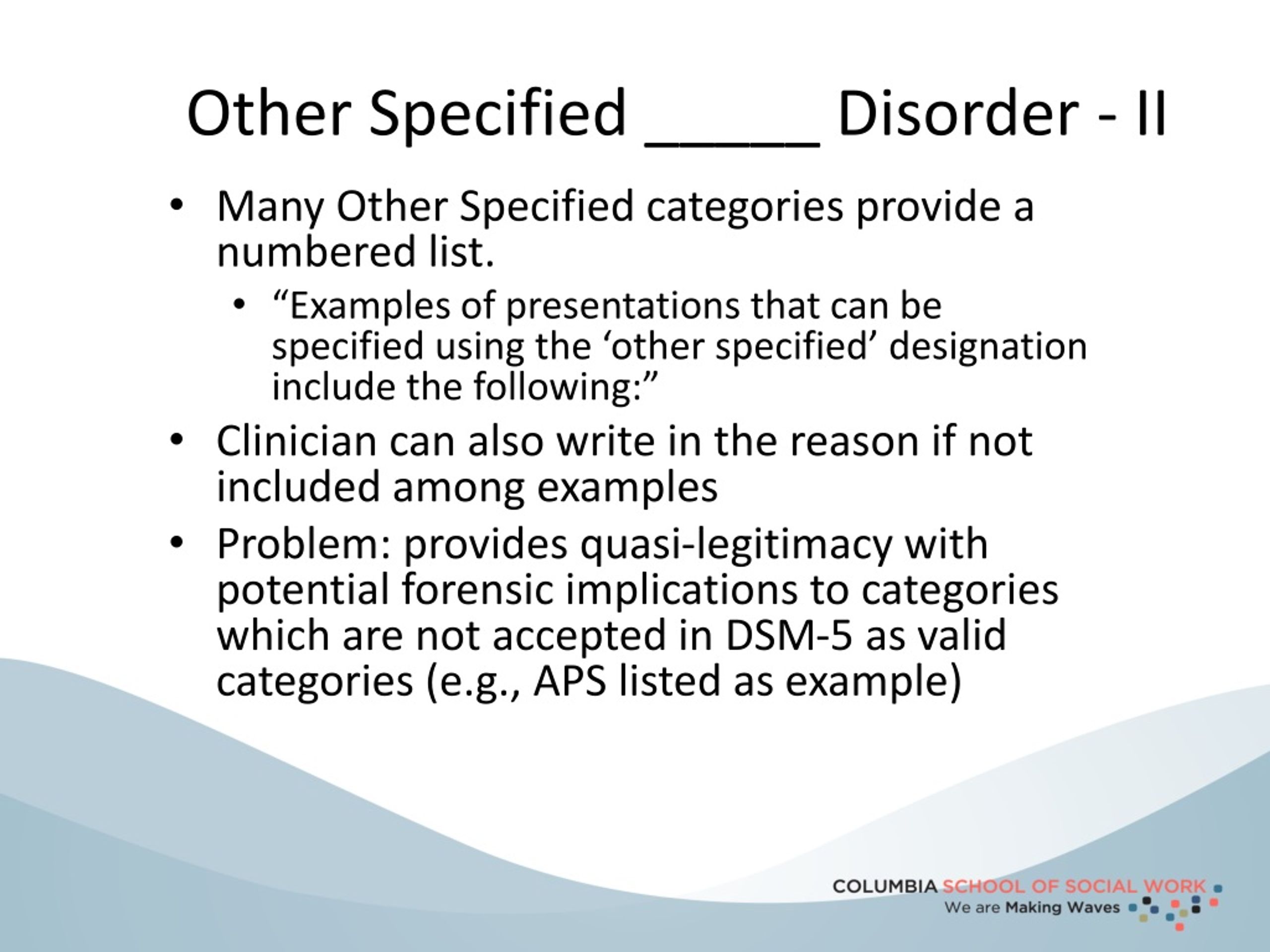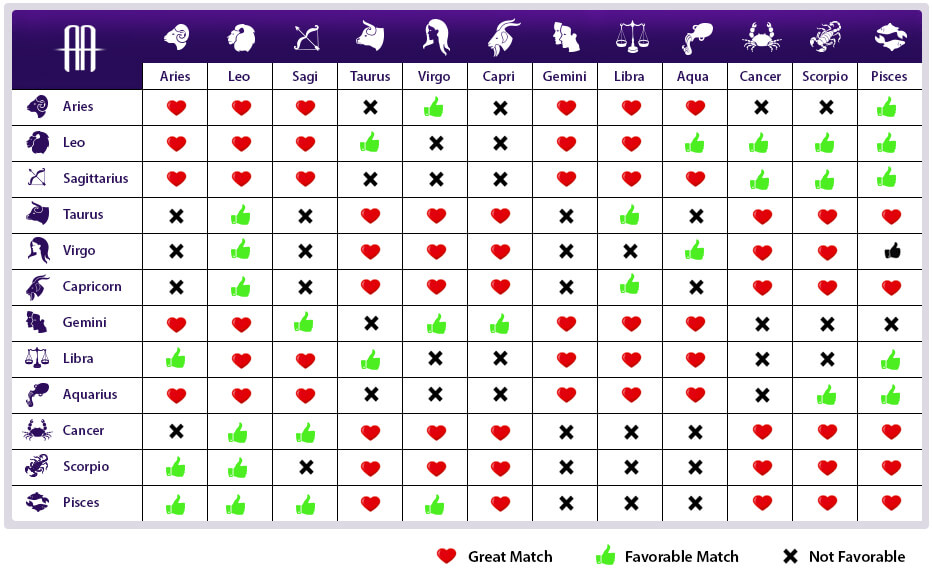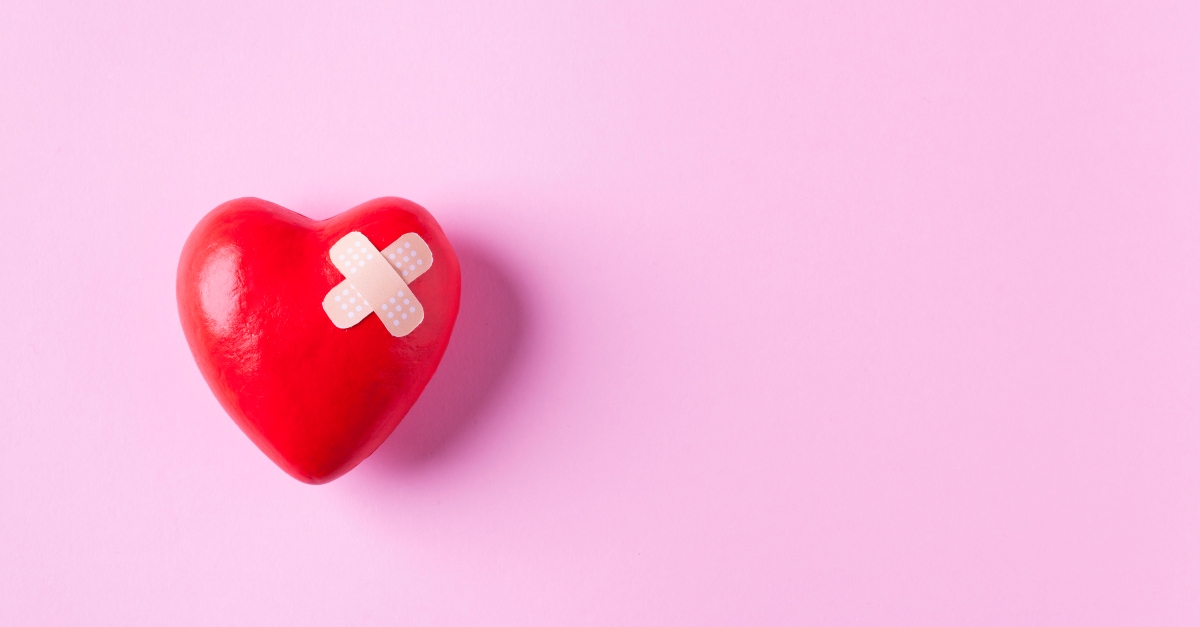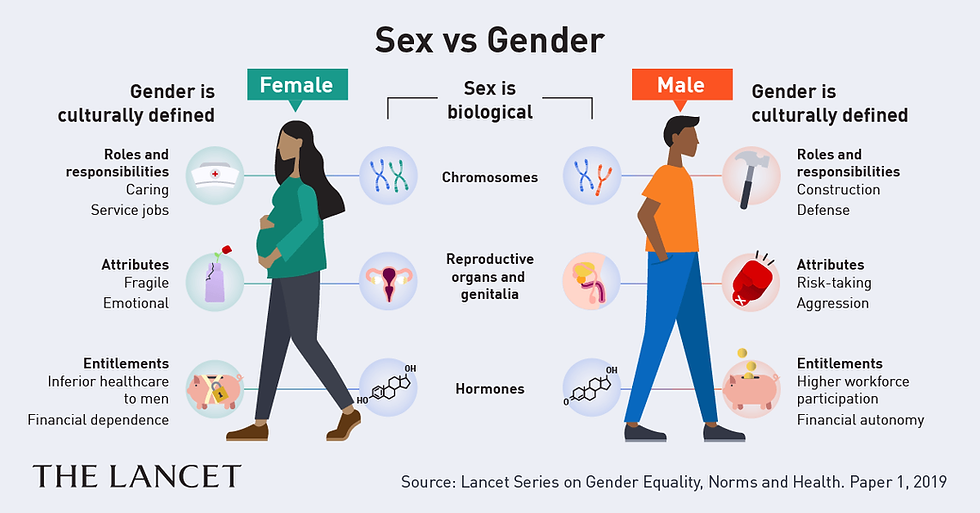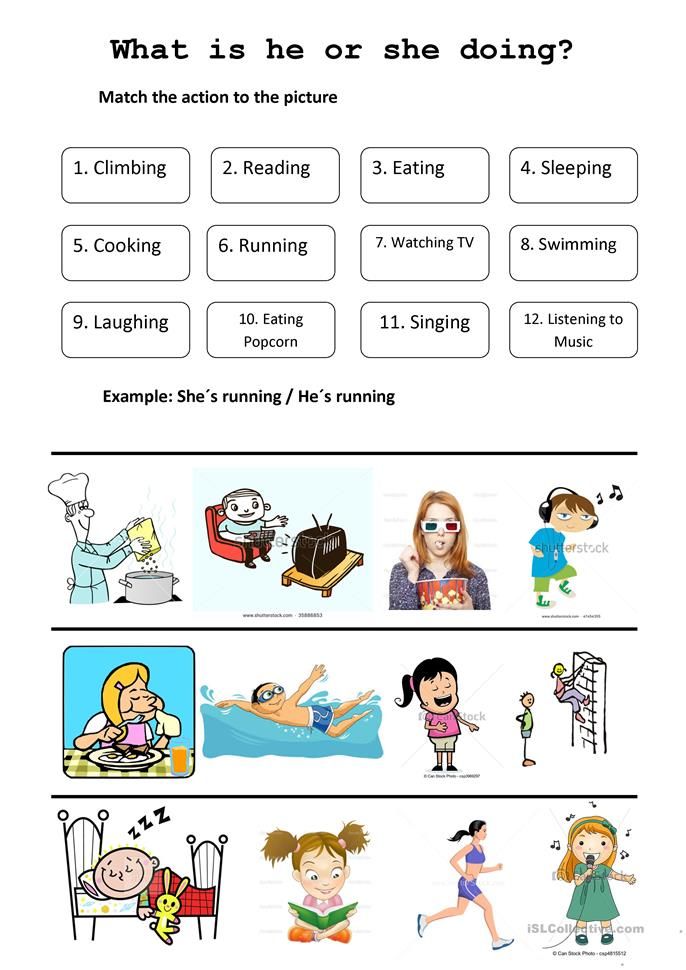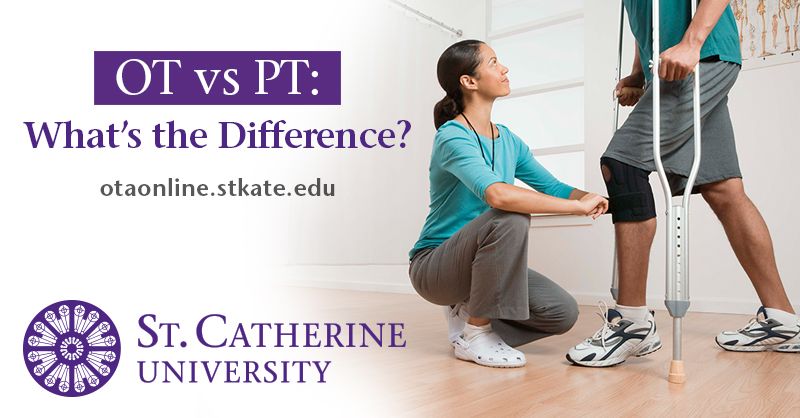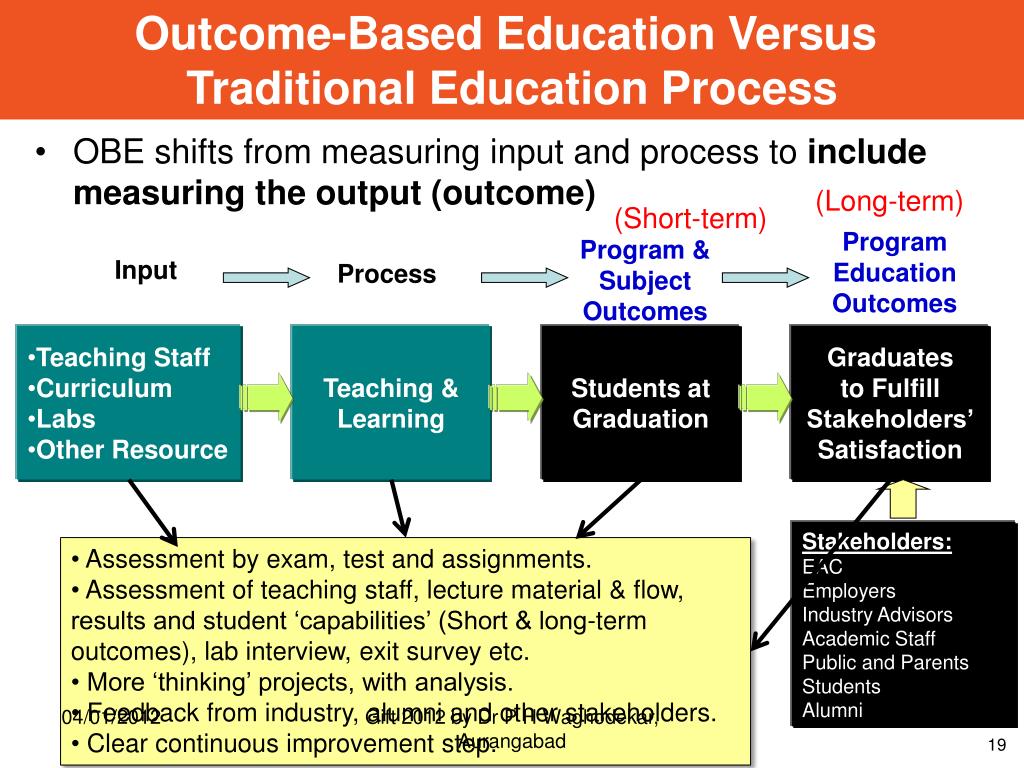What is the dsm 5 code for major depressive disorder
Depressive Disorders and Related DSM-5 Diagnostic Codes:
Depressive disorders:
The term depression refers to a prolonged period of low mood and energy, feelings of sadness and possible dejection, as well as isolation at times. Depressive disorders are usually diagnosed when an individual’s low mood or depression is prolonged enough to interfere with an individual’s activities of daily living.
Depressive disorders usually affect individuals through disturbance of mood and energy which is frequently accompanied by symptoms of anxiety. The prevalence of depressive disorders is very high among the general population as well as in comparison to other mental health disorders.
Research and clinical experience has found that the prevalence of depression among the general population may be about 10% and is frequently the focus of clinical attention due to its high prevalence, and at times its severity. Depressive disorders can be very disabling. Also, in addition to the symptoms of depression, it is also believed that close to 50% of individuals diagnosed with anxiety disorders also meet the criteria for a depressive disorder.
The specific depressive disorders follow below.
Specific Depressive Disorders and Related DSM-5 Diagnostic Codes ICD-9-CM and ICD-10-CM coeds repectively:
296.99 (F34.8) Disruptive Mood Dysregulation Disorder
Major Depressive Disorder: Single Episode
296.21 (F32.0) Mild
296.22 (F32.0) Moderate
296.23 (F32.2) Severe
296.24 (F32.0) With Psychotic Features
296.25 (32.4) In Partial Remission
296.26 (F32.5) In Full Remission
296.20 (F32.9) Unspecified
Major Depressive Disorder: Recurrent Episode
296.31 (F33.0) Mild
296.32 (F33.1) Moderate
296.33 (F33.2) Severe
296.34 (F33.3) With Psychotic Features
296.35 (F33.41) In Partial Remission
296.36 (F33.42) In Full Remission
296.30 (F33.9) Unspecified
300.4 (F34.1) Persistent Depressive Disorder (Dysthymia)
Specify if: In Partial Remission, In Full Remission
Specify if: Early Onset, Late Onset
Specify if: With Pure Dysthymic Syndrome; With Persistent Major Depressive Episode; With
Intermittent Major Depressive Episodes, With Current Episode; With Intermittent Major Depressive Episodes, Without Current Episode.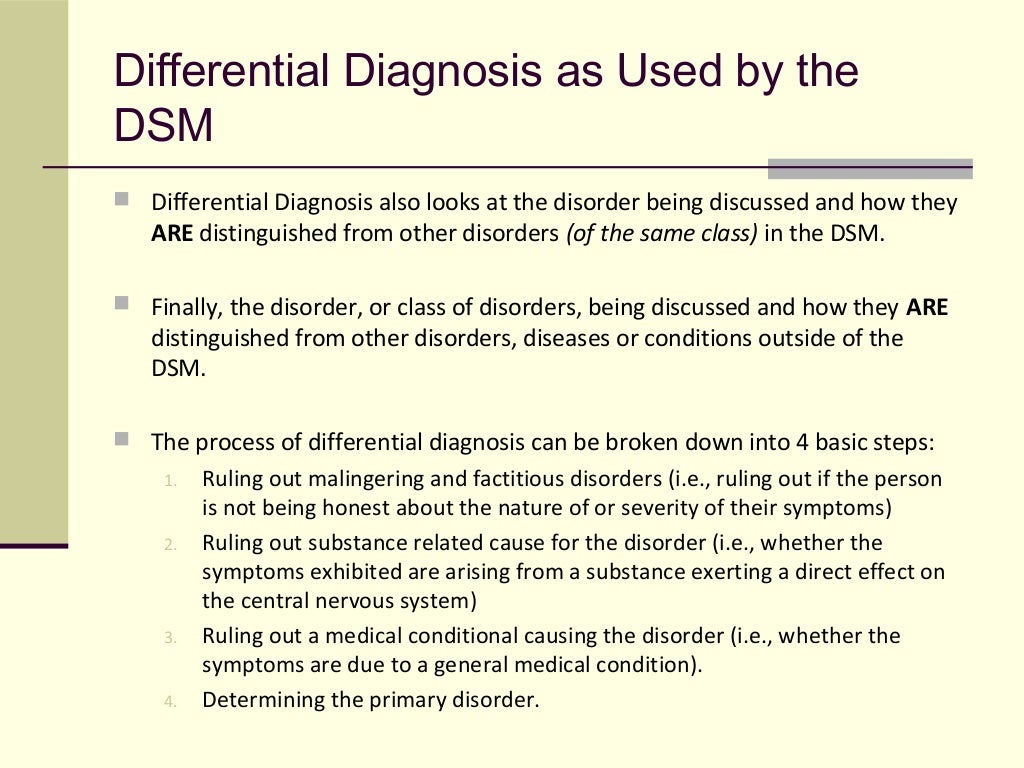
Specify current severity: Mild, Moderate, Severe
625.4 (N94.3) Premenstrual Dysphoric Disorder
Substance /Medication – Induced Depressive Disorder
Note: See the criteria set and corresponding recording procedures for substance-specific codes and ICD-9-CM and ICD-10-CM coding
Specify if: With onset during intoxication, With onset during withdrawal
293. 83 Depressive Disorder Due to Another Medical Condition
Specify if:
(F06.31) With depressive features
(F06.32) With major depressive-like episode
(F06.34) With mixed features
311 (F32.8) Other specified depressive disorder
311 (F 32.9) Unspecified depressive disorder
311 (F32.8) Other Specified Depressive Disorder
MAJOR DEPRESSIVE DISORDER: DSM 5
What is the DSM-5 code for major depressive disorder? Major Depressive Disorder DSM-5 296.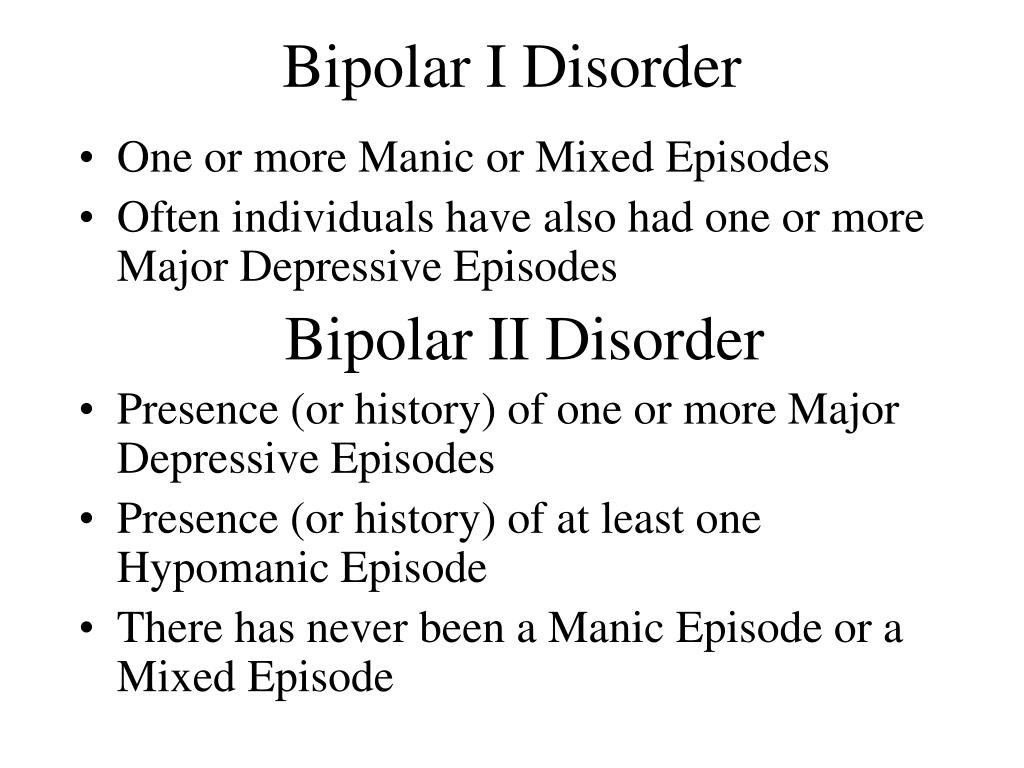 20-296.36 (ICD-10-CM Multiple Codes)
20-296.36 (ICD-10-CM Multiple Codes)
According to National Library for Medicine (NLM):
DSM-IV to DSM-5 Major Depressive Episode/Disorder Comparison
| Criteria1 | DSM-IV | DSM-52 |
|---|---|---|
| Class: Mood Disorders | ✓ | |
| Class: Depressive Disorders | ✓ | |
| Five or more of the following A Criteria (at least one includes A1 or A2) | ✓ | ✓ |
| A1 Depressed mood—indicated by subjective report or observation by others (in children and adolescents, can be irritable mood). | ✓ | ✓ |
| A2 Loss of interest or pleasure in almost all activities—indicated by subjective report or observation by others. | ✓ | ✓ |
A3 Significant (more than 5 percent in a month) unintentional weight loss/gain or decrease/increase in appetite (in children, failure to make expected weight gains).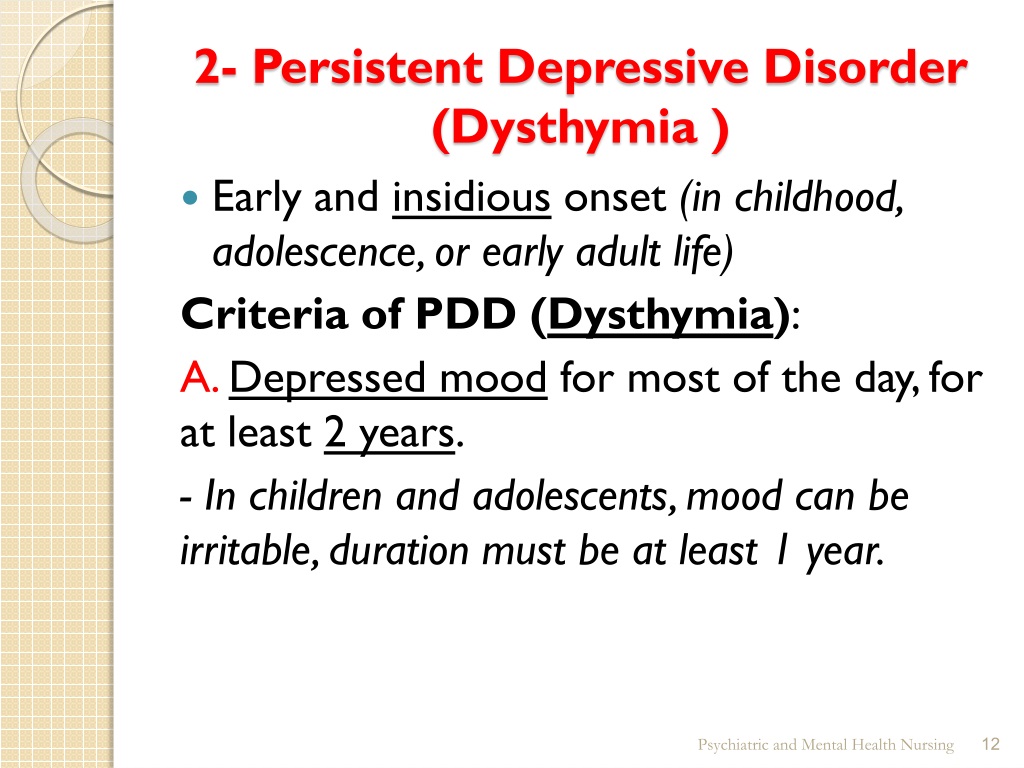 | ✓ | ✓ |
| A4 Sleep disturbance (insomnia or hypersomnia). | ✓ | ✓ |
| A5 Psychomotor changes (agitation or retardation) severe enough to be observable by others. | ✓ | ✓ |
| A6 Tiredness, fatigue, or low energy, or decreased efficiency with which routine tasks are completed. | ✓ | ✓ |
| A7 A sense of worthlessness or excessive, inappropriate, or delusional guilt (not merely self-reproach or guilt about being sick). | ✓ | ✓ |
| A8 Impaired ability to think, concentrate, or make decisions—indicated by subjective report or observation by others. | ✓ | ✓ |
| A9 Recurrent thoughts of death (not just fear of dying), suicidal ideation, or suicide attempts. | ✓ | ✓ |
| The symptoms cause clinically significant distress or impairment in social, occupational, or other important areas of functioning. | ✓ | ✓ |
The symptoms are not due to the direct physiological effects of a substance (e.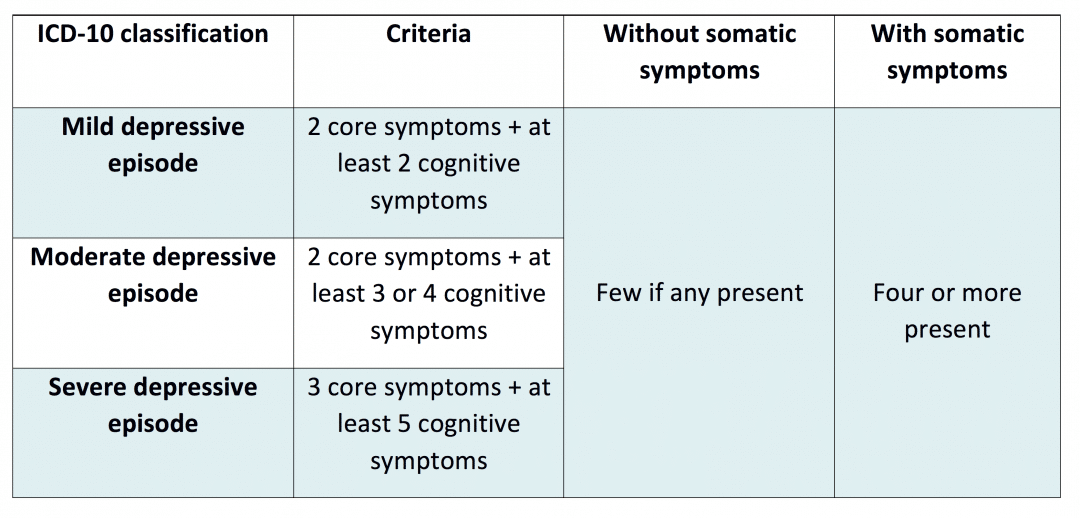 g., drug abuse, a prescribed medication’s side effects) or a medical condition (e.g., hypothyroidism). g., drug abuse, a prescribed medication’s side effects) or a medical condition (e.g., hypothyroidism). | ✓ | ✓ |
| The symptoms do not meet criteria for a mixed episode3 | ✓ | |
| There has never been a manic episode or hypomanic episode. | ✓ | ✓ |
| MDE is not better explained by schizophrenia spectrum or other psychotic disorders. | ✓ | ✓ |
| The symptoms are not better accounted for by bereavement (i.e., after the loss of a loved one, the symptoms persist for longer than 2 months or are characterized by marked functional impairment, morbid preoccupation with worthlessness, suicidal ideation, psychotic symptoms, or psychomotor retardation).4 | ✓ |
1. The symptom must either be new or must have clearly worsened compared with the person’s pre-episode status and must persist most of the day, daily, for at least 2 weeks in a row. Exclude symptoms that are clearly due to a general medical condition, mood-incongruent delusions, or mood-incongruent hallucinations.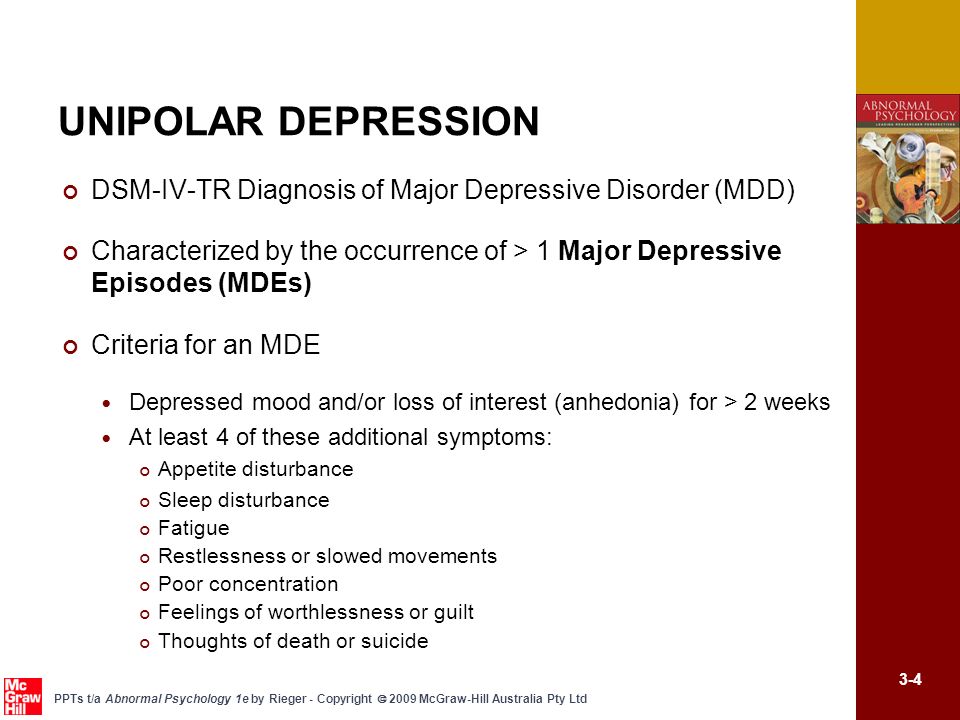
2. Symptom must persist most of the day, daily, for at least 2 weeks in a row, excluding A3 and A9.
3. A mixed episode is characterized by the symptoms of both a major depressive episode and a manic episode occurring almost daily for at least a 1-week period. This exclusion does not include episodes that are substance induced (e.g., caffeine) or the side effects of a medication.
4. This differentiation requires clinical judgment based on cultural norms and the individual’s history.
MAJOR DEPRESSIVE DISORDER ICD 10According to ICD-10-CM Diagnosis Code F32.9:
Major depressive disorder, single episode, unspecified
- F32.9 is a billable/specific ICD-10-CM code that can be used to indicate a diagnosis for reimbursement purposes.
- The 2022 edition of ICD-10-CM F32.9 became effective on October 1, 2021.
- This is the American ICD-10-CM version of F32.9 – other international versions of ICD-10 F32.9 may differ.

Applicable To:
- Major depression NOS
The following code(s) above F32.9 contain annotation back-references that may be applicable to F32.9:
- F01-F99 Mental, Behavioral and Neurodevelopmental disorders
- F32 Depressive episode
Approximate Synonyms:
- Dementia, presenile with depression
- Dementia, senile with depression
- Depressed mood
- Depression
- Depression during labor and delivery
- Depression in childbirth
- Depression in pregnancy
- Depression, major, single episode
- Depression, reactive
- Depression, unspecified
- Depressive disorder
- Depressive disorder in mother complicating pregnancy
- Major depression, single episode
- Major depressive disorder in childbirth
- Major depressive disorder in pregnancy
- Major depressive disorder, single episode
- Mood disorder of depressed type
- Mood disorder with depressive feature
- Multi-infarct dementia with depression
- Postpartum (after childbirth) depression
- Presenile dementia with depression
- Reactive depression
- Reactive depression (situational)
- Senile dementia with depression
- Severe postnatal depression
- Vascular dementia w depressed mood
- Vascular dementia with depression
Clinical Information:
- A disorder characterized by melancholic feelings of grief or unhappiness.
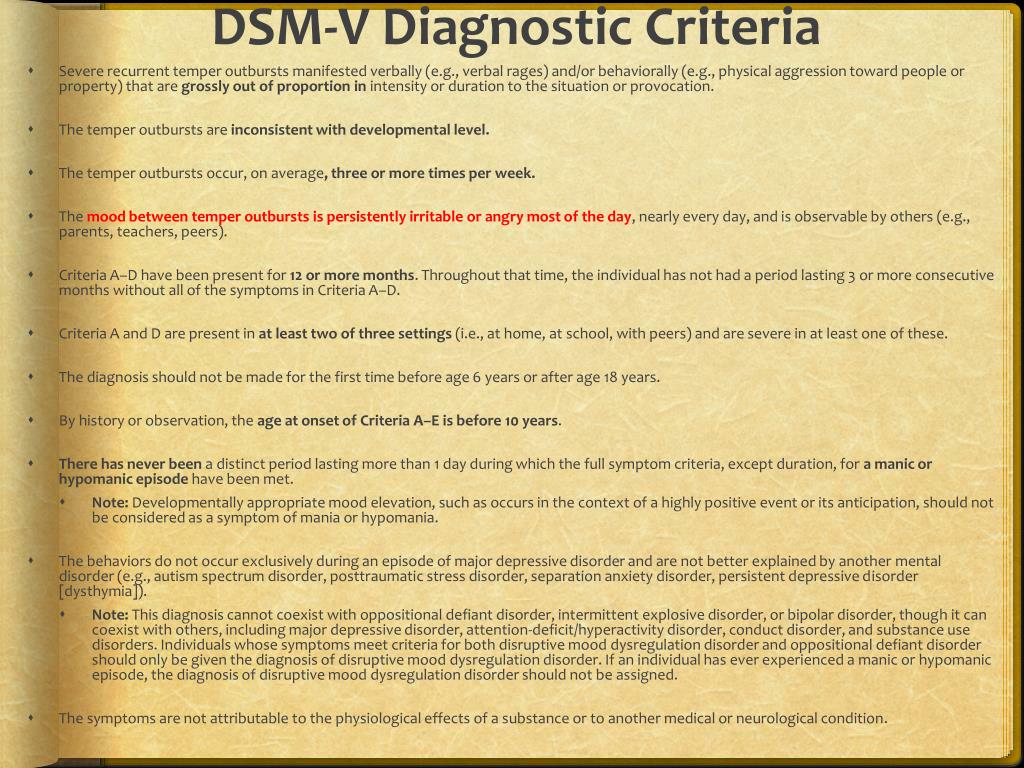
- A melancholy feeling of sadness and despair.
- A mental condition marked by ongoing feelings of sadness, despair, loss of energy, and difficulty dealing with normal daily life. Other symptoms of depression include feelings of worthlessness and hopelessness, loss of pleasure in activities, changes in eating or sleeping habits, and thoughts of death or suicide. Depression can affect anyone, and can be successfully treated. Depression affects 15-25% of cancer patients.
- Affective disorder marked by dysphoric mood, inactivity, lack of interest, insomnia, feelings of worthlessness, diminished ability to think, and thoughts of suicide. Use depression (emotion) for nonclinical depression.
- An affective disorder manifested by either a dysphoric mood or loss of interest or pleasure in usual activities. The mood disturbance is prominent and relatively persistent.
- Depression is a serious medical illness that involves the brain. It’s more than just a feeling of being “down in the dumps” or “blue” for a few days.
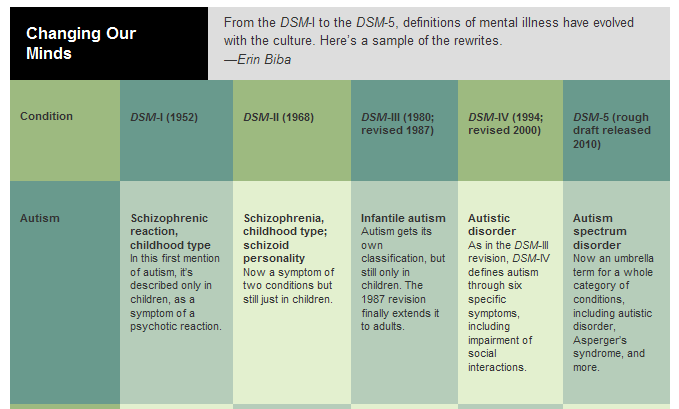 If you are one of the more than 20 million people in the United States who have depression, the feelings do not go away. They persist and interfere with your everyday life. Symptoms can include
If you are one of the more than 20 million people in the United States who have depression, the feelings do not go away. They persist and interfere with your everyday life. Symptoms can include- sadness
- loss of interest or pleasure in activities you used to enjoy
- change in weight
- difficulty sleeping or oversleeping
- energy loss
- feelings of worthlessness
- thoughts of death or suicide
- Depressive states usually of moderate intensity in contrast with major depression present in neurotic and psychotic disorders.
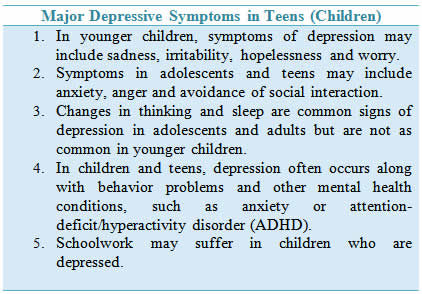
- Marked depression appearing in the involution period and characterized by hallucinations, delusions, paranoia, and agitation.
- Mild depression that is not considered clinical depression. For clinical depression, use major depression.
- One or more periods of depression in the absence of history of manic or hypomanic episodes; chronic type lasts 2 or more years; melancholic type is more severe, has vegetative signs, and responds well to somatic therapy.
- Unpleasant, but not necessarily irrational or pathological, mood state characterized by sadness, despair, or discouragement; “the blues”; may also involve low self-esteem, social withdrawal, and somatic symptoms such as eating and sleep disturbance.
SUICIDE PREVENTION
If you think someone is at immediate risk of self-harm or hurting another person:
- Call 911 or your local emergency number.
- Stay with the person until help arrives.
- Remove any guns, knives, medications, or other things that may cause harm.

- Listen, but don’t judge, argue, threaten, or yell.
- If you or someone you know is considering suicide, get help from a crisis or suicide prevention hotline. Try the National Suicide Prevention Lifeline at 800-273-8255.
Published: March 24, 2023
How to Find an In-Network Treatment Center?
For individuals seeking drug and alcohol addiction treatment, finding a treatment center that is in-network with their insurance provider can be an important consideration. In-network treatment centers can help individuals save money on their out-of-pocket costs and ensure that they receive the highest level of coverage for their treatment. Here are some tips on how […]
Read more
Published: March 02, 2023
Rehab After Work: Outpatient Rehabs in Los Angeles, CA
Intensive outpatient programs and partial hospitalization programs, also known as “rehab after work,” can be effective treatment options for individuals seeking treatment for drug and alcohol addiction in Los Angeles, California.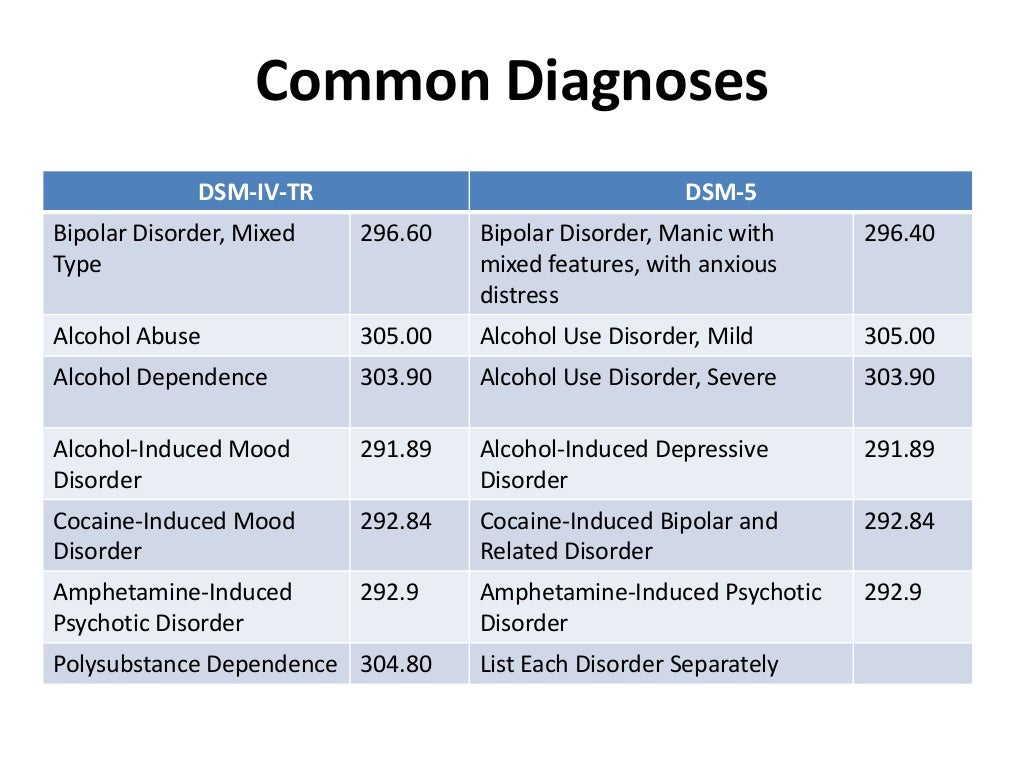 Rehab after work refers to outpatient drug and alcohol treatment programs that provide flexible treatment options for individuals who want to receive treatment while […]
Rehab after work refers to outpatient drug and alcohol treatment programs that provide flexible treatment options for individuals who want to receive treatment while […]
Read more
Published: February 17, 2023
How To Find Quality Psychological Therapy Near Me?
Psychological therapy, also known as psychotherapy, is a treatment approach that aims to help individuals address mental health issues, behavioral problems, and emotional struggles. This type of therapy is provided by licensed mental health professionals who specialize in treating a wide range of mental health conditions. In this article, we will discuss the benefits of […]
Read more
Major depressive disorders (clinical depression)
Depression is different from normal mood swings and short-term emotional responses to everyday problems. Prolonged moderate to severe depression can become a serious illness. This results in patients suffering greatly and doing poorly at work, at school and have problems in their families.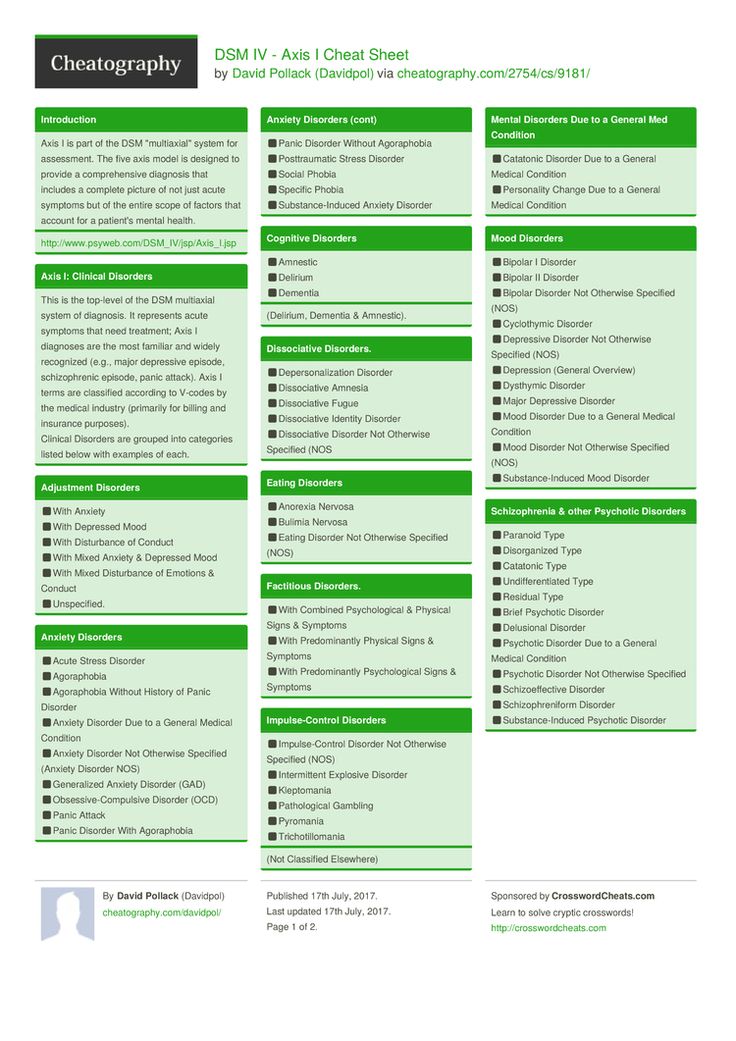 At its worst, depression can lead to suicide.
At its worst, depression can lead to suicide.
Depression is a common illness worldwide, affecting more than 264 million people. Major depressive disorder is one of the most common forms of mental illness, affecting approximately one in six men and one in four women in their lives.
Major depressive disorder (MDD) is a severe condition characterized by low mood, decreased interests, poor cognitive function, and autonomic symptoms such as disturbed sleep or eating. MDD can develop in one in six adults during their lifetime and affects about twice as many women as men.
Main symptoms of depressive disorder
Symptoms of major depressive disorder (MDD) may include:
- depression almost every day
- loss of interest in activities you once enjoyed
- changes in appetite or weight
- sleep problems
- feeling lazy or restless
- low energy
- feelings of hopelessness or worthlessness
- trouble concentrating
- frequent thoughts of death or suicide
Recurrent depression:
This is a highly relapsing condition: at least 50% of people recovering from a first episode of depression have at least one additional episode in their lifetime, and about 80% of people have a history of two recurrent episodes.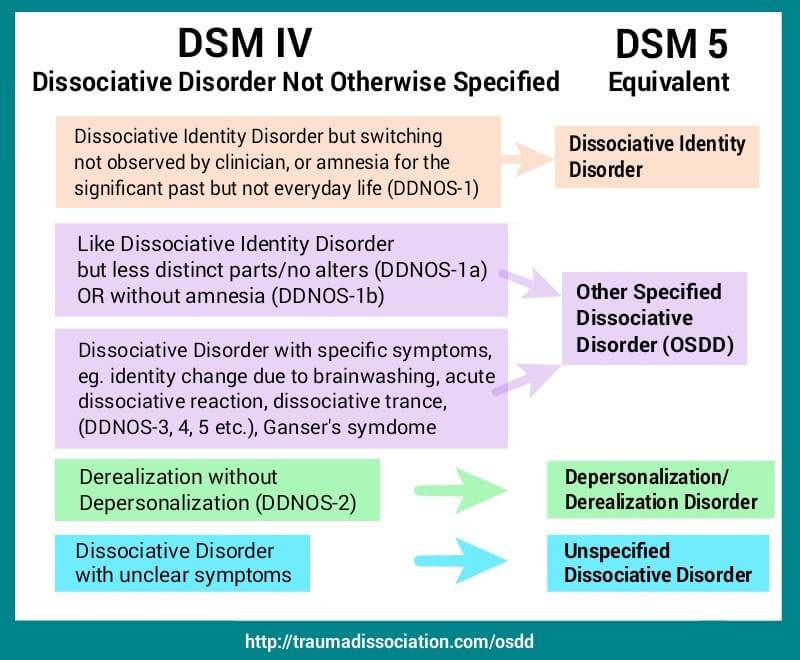
Episodes typically recur within five years of the first episode, and the average person with a history of depression will have five to nine depressive episodes in their lifetime.
Symptoms of recurrent depression:
- difficulty concentrating
- disturbed sleep
- reduced energy level
- constant light alarm
Major depression in adults:
Depression is a common adult disorder that often leads to poor quality of life and impaired role functioning. Depression is also associated with high rates of suicidal behavior and death. When depression occurs in the context of a medical illness, it is associated with increased healthcare costs, longer hospital stays, poor collaboration in treatment, etc.
Causes of depression in adults may be related to the difficulty of changing roles:
- low education and low income
- early pregnancy and childbirth
- divorces
- unstable work
- highly competitive and hard work
Major symptoms of depression in adults include:
- Mostly sad or depressed mood
- Loss of interest or pleasure and avoidance of social gatherings
- Decreased energy and frequent fatigue
- Decreased concentration and attention
- Decreased self-esteem and self-confidence
- Thoughts on guilt and unworthiness
- A gloomy and pessimistic view of the future
- Thoughts or actions of harming oneself or suicidal thoughts
- Sleep disturbance or insomnia
- Pronounced or reduced appetite
DSM-5 Criteria for Major Depressive Disorder
According to the DSM-5, the following criteria must be met for a diagnosis of major depression:
At least five of the following symptoms must have been present for at least two weeks and reflect a change in previous functionality.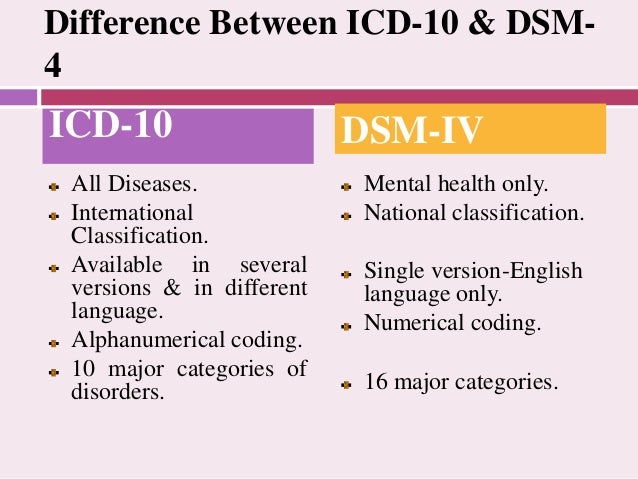 In addition, at least one of the symptoms is a low mood or loss of interest or pleasure.
In addition, at least one of the symptoms is a low mood or loss of interest or pleasure.
- The person is depressed most of the day, almost every day, as noted by himself or others.
- He or she is not interested in all or most activities most of the day, almost every day.
- Every day a person gains or loses a large amount of weight or has a decreased or increased appetite.
- Almost every day he or she suffers from insomnia or hypersomnia.
- Every day a person experiences psychomotor disturbances that are visible to others and can also be reported.
- Almost every day he or she feels exhausted or tired.
- Almost every day a person has thoughts of worthlessness or guilt.
- Every day a person's ability to think, concentrate, or make judgments deteriorates.
- He or she has recurrent suicidal thoughts, suicidal thoughts (without a definite plan), a suicide attempt, or a definite plan to commit suicide.
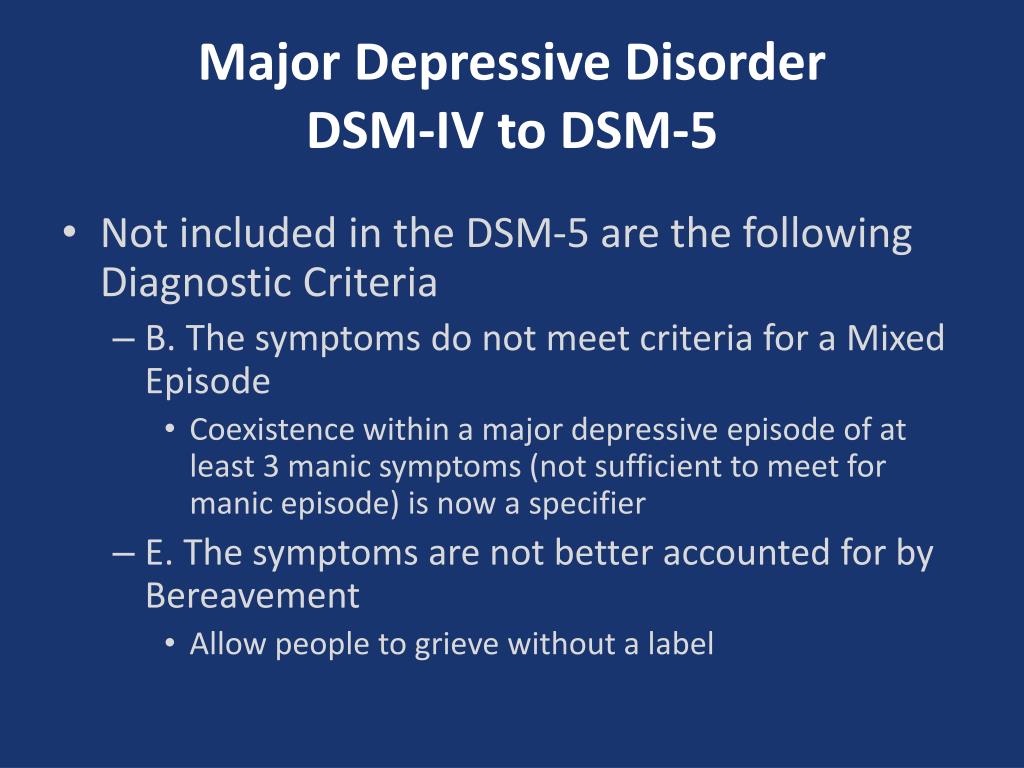
- Symptoms listed above cause clinical distress or interfere with daily activities.
- The episode of depression is not associated with the physiological effect of the drug or other disease.
- The onset of the episode is not better explained by specific or unspecified schizophrenia spectrum illness or other psychotic disorders.
- The person has never had a manic or hypomanic episode.
The diagnostic code for major depressive disorder is based on the frequency of recurrent episodes, the severity of the episodes, the presence of psychotic characteristics, and the state of remission. Below are the varieties of depression:
Severity of depression:
- Minor
- Moderate
- Heavy
- Psychotic
- In partial remission
- In complete remission
- Undefined
Epidemiology
Major depressive illness is a common mental illness. Its lifetime prevalence ranges from 5 to 17 percent. The incidence in women is about twice as high as in men. This is due to hormonal variations, the consequences of childbearing, different psychological pressures in men and women, and a behavioral model of learned helplessness. Although the median age of onset is around 40 years old, new studies show an increase in the incidence among younger populations due to the use of alcohol and other psychoactive substances.
The incidence in women is about twice as high as in men. This is due to hormonal variations, the consequences of childbearing, different psychological pressures in men and women, and a behavioral model of learned helplessness. Although the median age of onset is around 40 years old, new studies show an increase in the incidence among younger populations due to the use of alcohol and other psychoactive substances.
MDD is more common in divorced, separated, or bereaved individuals who do not have meaningful interpersonal interactions. There is no difference in the prevalence of MDD between races or socioeconomic status. People with MDD often have comorbidities such as substance abuse, panic disorder, social anxiety disorder, and obsessive-compulsive disorder.
The presence of these comorbidities in people with MDD increases the risk of suicide. Depression is more common in older people with underlying medical problems. Depression is more common in rural areas than in cities.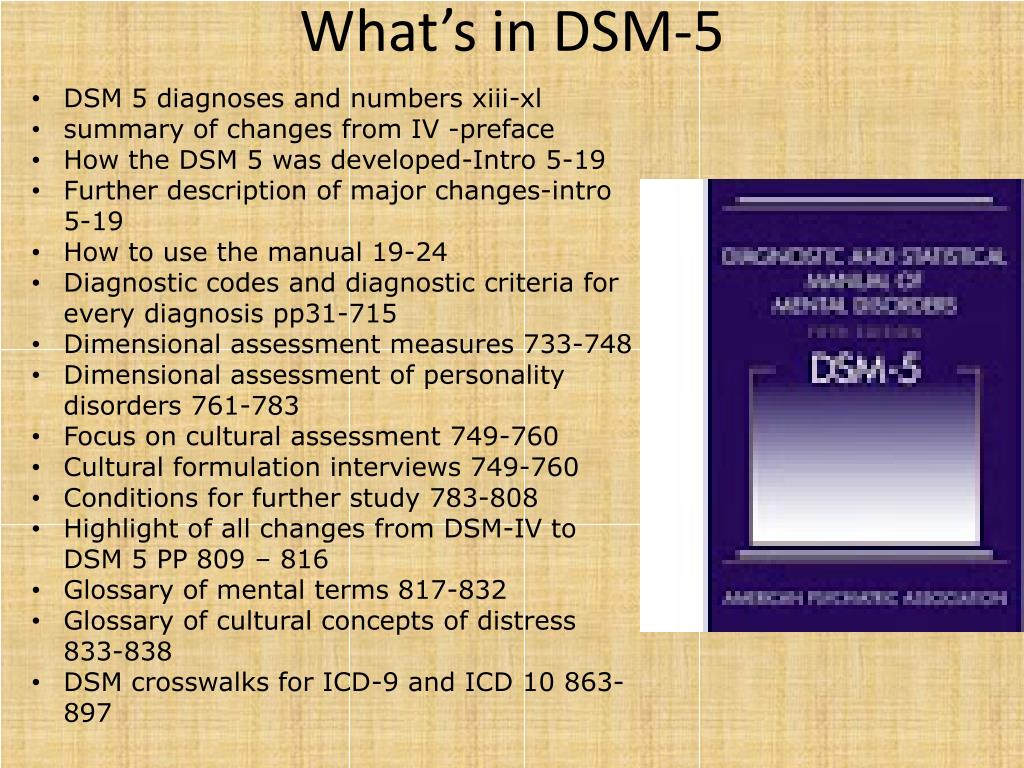
Pathophysiology of major depressive disorder
The genesis of major depressive disorder is believed to be multifaceted, with biological, genetic, environmental and psychological factors at play. It used to be thought that MDD was caused mainly by abnormalities in neurotransmitters, especially serotonin, norepinephrine, and dopamine.
This has been demonstrated by the use of several antidepressants in the treatment of depression, such as selective serotonin receptor inhibitors, serotonin-norepinephrine receptor inhibitors, and dopamine-norepinephrine receptor inhibitors. Serotonin metabolites have been found to decrease in people who have had suicidal thoughts. However, recent hypotheses suggest that this is largely due to more complex neuroregulatory systems and brain circuits, leading to subsequent disruption of the neurotransmitter systems.
GABA, an inhibitory neurotransmitter, as well as glutamate and glycine, important excitatory neurotransmitters, have been shown to play a role in the genesis of depression.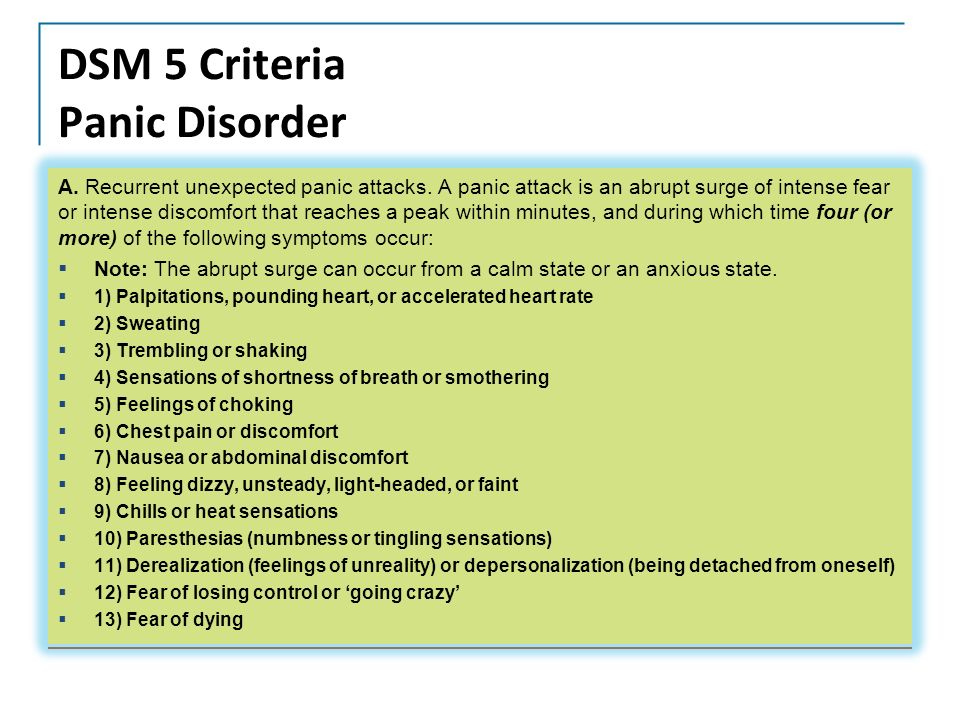 Depressed people have reduced plasma, cerebrospinal fluid, and brain levels of GABA. GABA is believed to act as an antidepressant by blocking the ascending monoamine pathways, including the mesocortical and mesolimbic systems.
Depressed people have reduced plasma, cerebrospinal fluid, and brain levels of GABA. GABA is believed to act as an antidepressant by blocking the ascending monoamine pathways, including the mesocortical and mesolimbic systems.
The antidepressant properties of drugs that oppose NMDA receptors have been investigated. Thyroid and growth hormone imbalances have also been linked to mood disorders. Numerous adversity and trauma in childhood have been linked to the development of depression later in life.
Severe early stress can cause dramatic changes in neuroendocrine and behavioral responses, leading to anatomical abnormalities in the cerebral cortex and severe depression later in life. Structural functional tomography of the brain in people with depression revealed greater hyperintensity in the subcortical regions and a decrease in the metabolism of the anterior brain regions on the left.
Family, adoption and twin studies have shown that genes play a role in the risk of depression.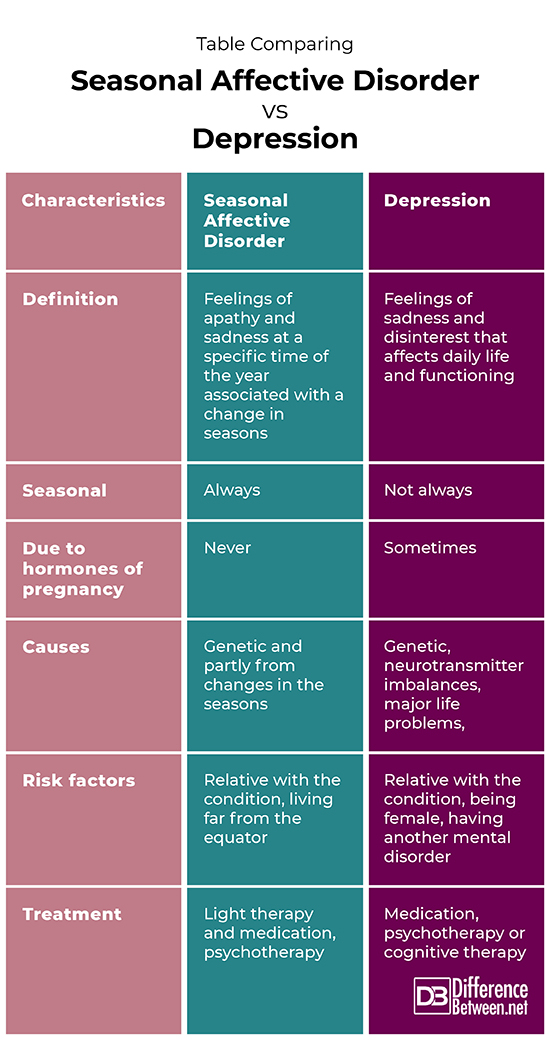 According to genetic studies, twins with MDD have a very high level of concordance, especially monozygotic twins. Life experience and personal qualities also have an impact.
According to genetic studies, twins with MDD have a very high level of concordance, especially monozygotic twins. Life experience and personal qualities also have an impact.
According to the theory of learned helplessness, the onset of depression is associated with the experience of uncontrollable events. Depression, according to cognitive theory, results from cognitive errors in those who are predisposed to depression.
Somatic illnesses associated with depression
Somatic sensations are especially common in depression and other mental illnesses. Although somatic symptoms are common in depressed individuals, they are of much lesser importance than major depressive symptoms in the diagnosis of depression.
The clinical stages of sad mood are characterized by both painful and non-painful bodily symptoms.
Major depressive disorder diagnosis
Major depressive disorder is a clinical diagnosis; this is mainly determined by the patient's medical history and assessment of mental status.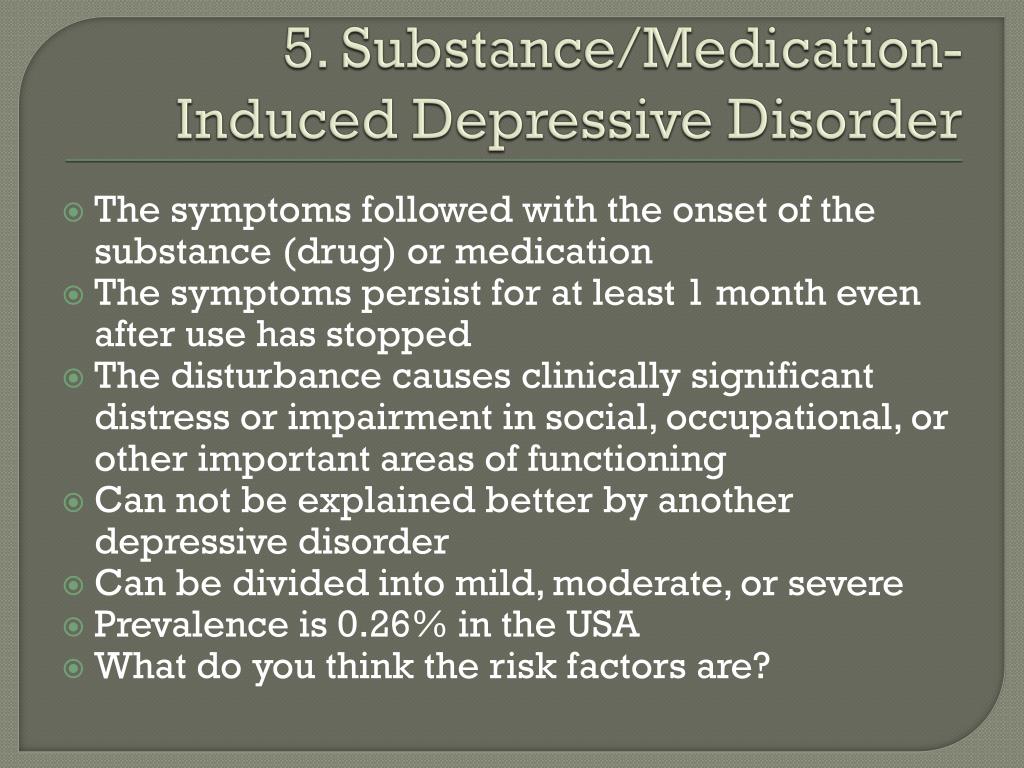 Along with symptomatology, the clinical interview should include medical history, family history, social history, and history of drug use. Related information from the patient's family/friends is an important component of the psychiatric evaluation.
Along with symptomatology, the clinical interview should include medical history, family history, social history, and history of drug use. Related information from the patient's family/friends is an important component of the psychiatric evaluation.
Although there are no objective tests to diagnose depression, routine laboratory tests such as CBC with a differential diagnosis, a comprehensive metabolic panel, thyroid-stimulating hormone, free T4, vitamin D, urinalysis, and toxicology screening are done to rule out organic or medical diseases. causes of depression.
People with depression often see their primary care physicians for medical problems related to their depression rather than seeking a mental health professional. In nearly half of the cases, patients deny experiencing depressive symptoms and are often referred to therapy by family members or sent by employers to be tested for social isolation and decreased activity. At each visit, it is critical to assess the patient for thoughts of suicide or murder.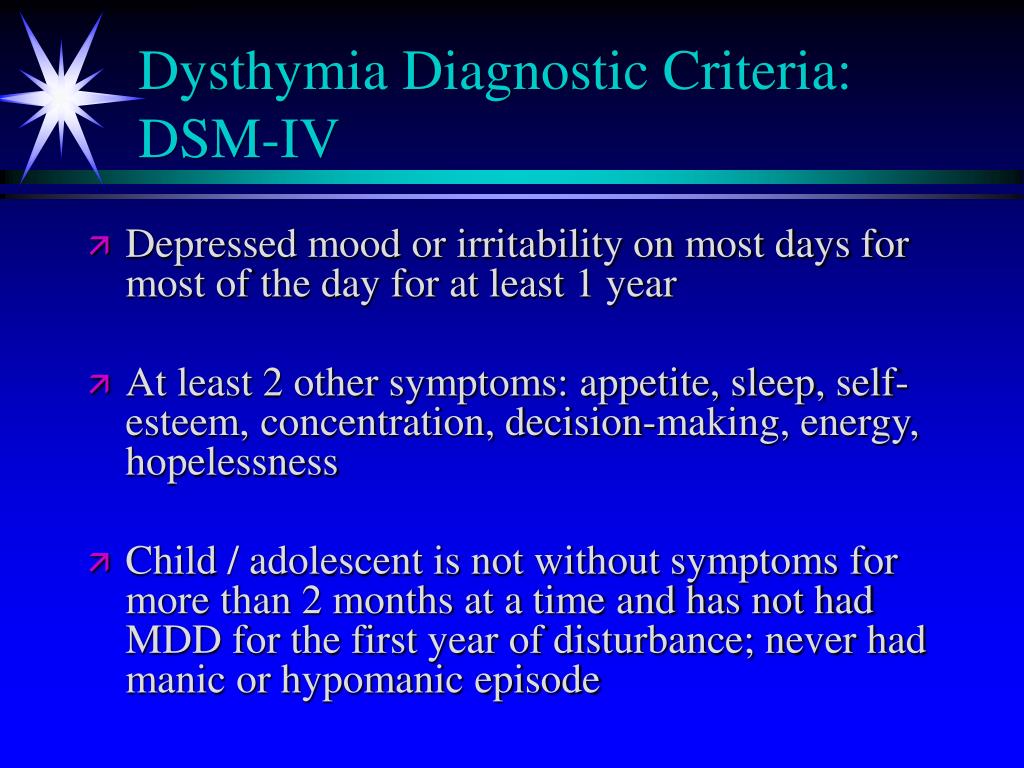
Being in a bad mood or feeling tense is common for all of us. When these feelings persist, you may suffer from depression or anxiety—or both. The self-assessment quizzes contain relevant questions to help you assess your current situation and develop a strategy to help you feel better sooner.
When you are going through a difficult moment, it is natural to feel depressed for a while; feelings like melancholy and loss help define who we are. However, if you feel sad or uncomfortable most of the time for an extended period of time, you may be suffering from depression.
Take a self-test to see if you are showing any warning signs of depression. This won't give you a diagnosis, but it will help you determine what to do next.
Major depressive disorder with psychotic features
Psychotic depression, also known as major depressive disorder with psychotic features, is a serious medical or mental illness that requires prompt treatment and constant monitoring by a physician or mental health professional.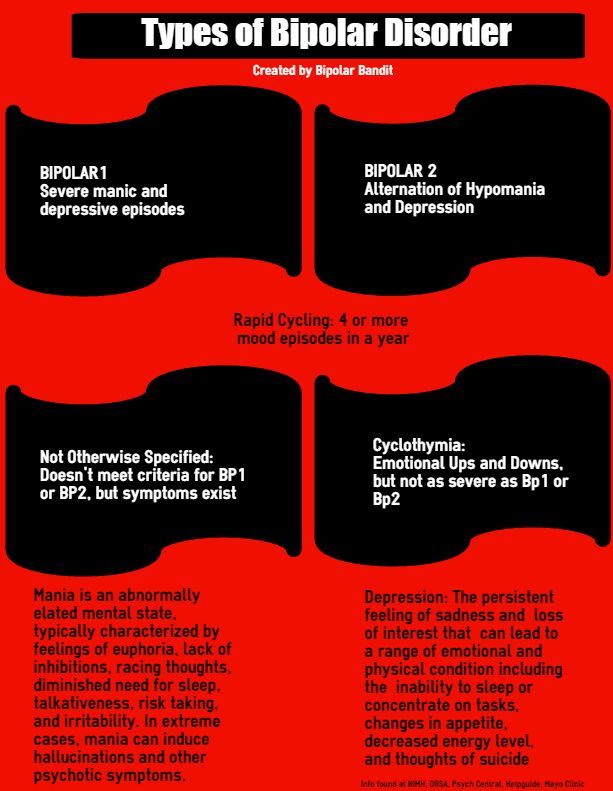
Major depression is a common mental condition that can have a detrimental effect on many aspects of a person's life. It affects mood and behavior as well as various bodily processes such as eating and sleeping. People who are severely depressed often lose interest in things they used to love and have difficulty doing daily activities. Sometimes they may even feel that life is not worth living.
Bipolar disorder (BD)
Depression in patients with bipolar disorder (BD) is a significant clinical problem. Since schizophrenia dominates even in the treatment of BD, depression is associated not only with schizophrenia, but also with BD and comorbid medical disorders with a high risk of suicide.
Diagnosis of bipolar disorder (BD) and risk factors:
Approximately 12-17% of cases of bipolar disorder are not recognized until the mood "transforms" into hypomania or mania, either spontaneously or under the influence of substances uplifting mood.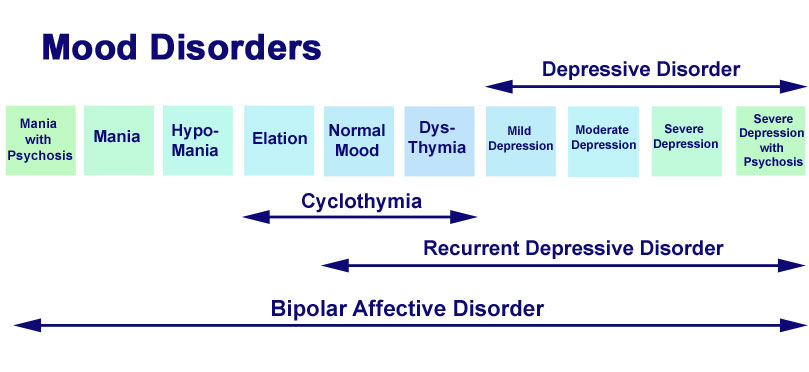
Factors suggesting a diagnosis of BD:
- Family mania, psychosis, "nervous breakdown" or psychiatric hospitalization
- Early onset, often with depressive symptoms
- Cyclothymic mood
- Multiple relapses (eg 4 episodes of depression in 10 years)
- Depression with characteristic agitation, anger, insomnia, irritability, talkativeness.
- Other features are "mixed" or hypomanic or psychotic symptoms.
- Clinically "worsens", especially with mixed properties, during antidepressant treatment.
- Suicidal thoughts and actions
- Alcohol or drug abuse
Major depressive disorder in children and adolescents:
Major depressive disorder (MDD) can have a significant impact onset during childhood and adolescence. Associated with this are poor school performance, interpersonal problems later in life, early parenthood, and an increased risk of other psychiatric and substance use disorders.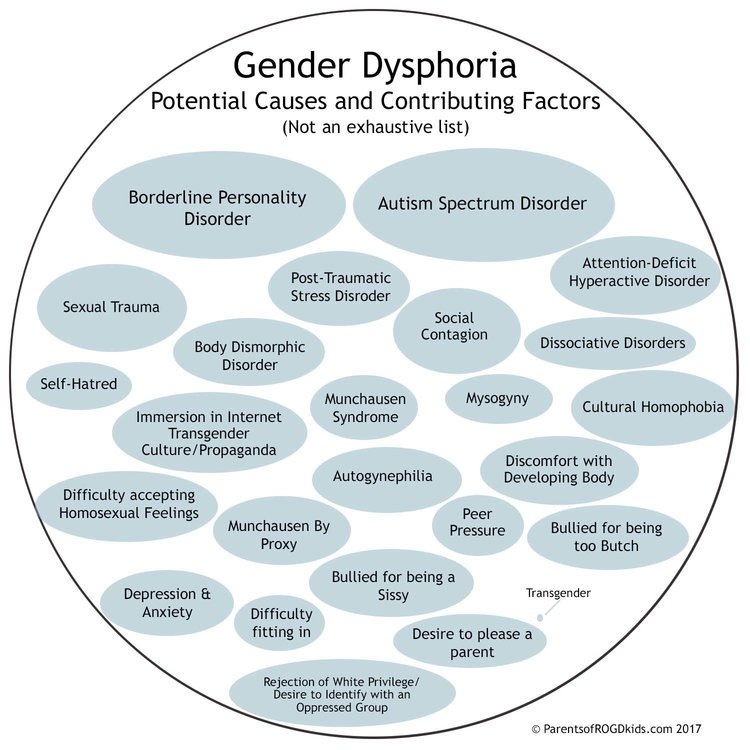 Diagnosing MDD in childhood is difficult. Children with MDD are often underdiagnosed and undertreated, and only 50% of adolescents are diagnosed before reaching adulthood.
Diagnosing MDD in childhood is difficult. Children with MDD are often underdiagnosed and undertreated, and only 50% of adolescents are diagnosed before reaching adulthood.
Symptoms of depression in children aged 3-8 years include:
- unsubstantiated claims.
- irritability
- less signs of depression
- anxiety
- behavioral changes
As the child becomes a teenager and adult, the presentation of symptoms meets the criteria for the Diagnostic and Statistical Manual of Mental Disorders (DSM-5):
- Irritability.
- Expected weight gain.
- Lethargy or inner restlessness.
- May be delusional and not limited to feelings of guilt.
Postpartum depression
Postpartum depression affects one in seven women (PPD). While most women recover quickly from childhood blues, PPD lasts much longer and has a significant impact on women's ability to return to normal activities.
PDD affects the mother and her relationship with the child. PRD impairs maternal brain response and behavior. Postpartum depression most often occurs within 6 weeks after delivery. PDD affects 6.5 to 20% of women. It is more common in teenage girls, mothers who have given birth prematurely, and women living in cities.
In one study, African American and Hispanic mothers reported onset of symptoms within 2 weeks of birth, while white mothers reported onset of symptoms later.
Premenstrual dysphoric disorder
Premenstrual symptoms are a group of psychological, behavioral and physical symptoms that cyclically occur before menstruation and subsequently resolve after menstruation in women of reproductive age. Most women experience relatively mild pain and the symptoms do not interfere with their personal, social, or professional lives; however, 5% to 8% of women experience moderate or severe symptoms that can cause significant distress and functional impairment.
All women of reproductive age, from menarche to menopause, may have premenstrual symptoms. Premenstrual symptoms are a common problem for women of reproductive age. In the United States, 70 to 90 percent of women of reproductive age report at least some premenstrual pain.
Approximately one third of these women have symptoms severe enough to warrant a diagnosis of PMS. PMDD, the most severe type of premenstrual symptom complex, occurs in 3-8% of these women.
Treatment of major depressive disorder
Treatment of major depressive disorder (MDD) in adults:
Treatment options for major depressive disorder include medication, psychological, interventional, and lifestyle changes. Medications and/or psychotherapy are used initially to treat MDD.
Combination treatment, including both drugs and psychotherapy, has been shown to be more effective than either treatment alone. Electroconvulsive therapy has been shown to be more effective than any other treatment for severe major depression.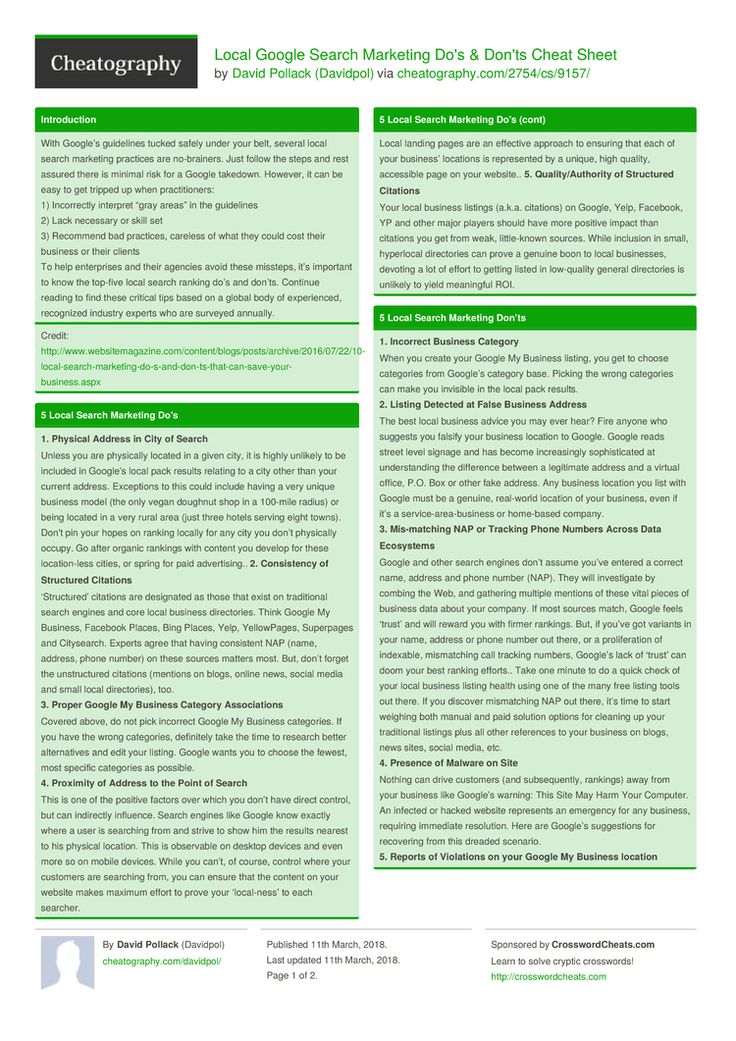
Patient psychotherapy:
Depression education and treatment can be provided to all patients. When appropriate, education may be provided to eligible family members.
Information about available treatment options will help patients make informed decisions, anticipate side effects, and follow prescribed treatment. Another important aspect of education was informing patients and concerned family members about the delayed duration of antidepressant onset of action.
Pharmacotherapy and acute treatment:
Antidepressants may be used as the primary treatment for patients with moderate or severe depression.
Clinical features that may indicate that the drug is a preferred therapeutic agent include a history of previous positive response to antidepressants, severity of symptoms, significant sleep disturbance and appetite disturbance.
Patients with severe depression with psychotic features will require antidepressant and antipsychotic and/or electroconvulsive therapy (ECT).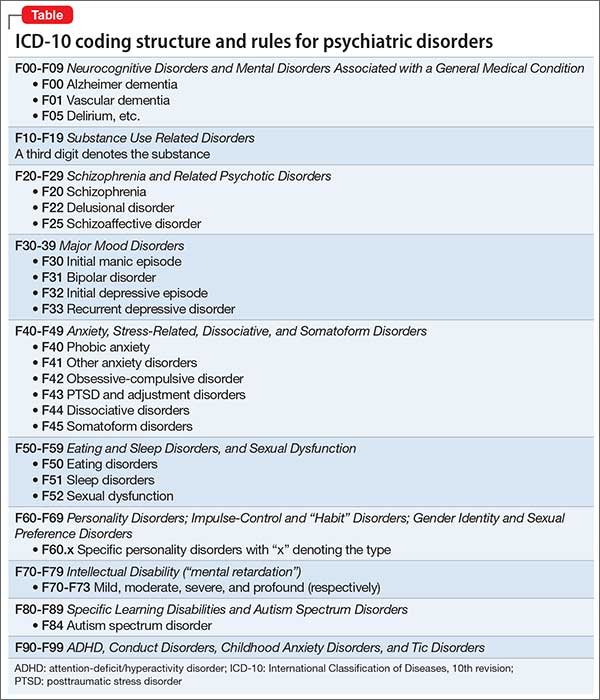
All antidepressants are effective, although their side effects vary. The following drugs have been approved by the FDA for the treatment of MDD:
- Fluoxetine, sertraline, citalopram, escitalopram, paroxetine, and fluvoxamine are examples of selective serotonin reuptake inhibitors (SSRIs). They are commonly used as first line therapy and are the most commonly prescribed antidepressants.
- Venlafaxine, duloxetine, desvenlafaxine, levomilnacipran and milnacipran are examples of serotonin and norepinephrine reuptake inhibitors (SNRIs). They are often used to treat depressed people who also have pain problems.
- Trazodone, vilazodone and vortioxetine are serotonin modulators.
- Bupropion and mirtazapine are examples of atypical antidepressants. When patients experience sexual side effects from SSRIs or SNRIs, they are often recommended as monotherapy or as adjunctive drugs.
- Amitriptyline, imipramine, clomipramine, doxepin, nortriptyline and desipramine are tricyclic antidepressants (TCAs).
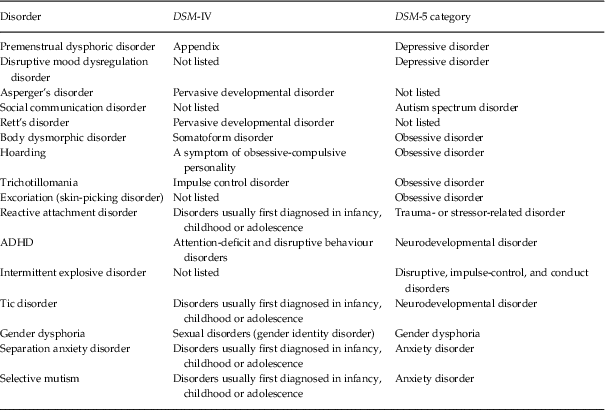
- Tranylcypromine, phenelzine, selegiline, and isocarboxazid are examples of monoamine oxidase inhibitors (MAOIs). Due to the high prevalence of side effects and death in overdose, MAOIs and TCAs are not commonly used.
- Other drugs that can be used to improve the effectiveness of antidepressants include mood stabilizers and antipsychotics.
The role of yoga and meditation in managing depression:
Originating in ancient India, yoga is recognized as a form of alternative medicine using mind-body practice. Yoga philosophy is based on 8 elements that are best described as the ethical principles of a meaningful and purposeful life. Yoga can help with depression through the following mechanisms:
- Muscle relaxation resulting in less pain
- Creating Balanced Energy
- Decreased breathing and heart rate
- Lowering blood pressure and cortisol levels
- Increase blood flow
- Reducing stress and anxiety through tranquility
- Improve pre-existing ailments such as arthritis, cancer, mental illness and more.
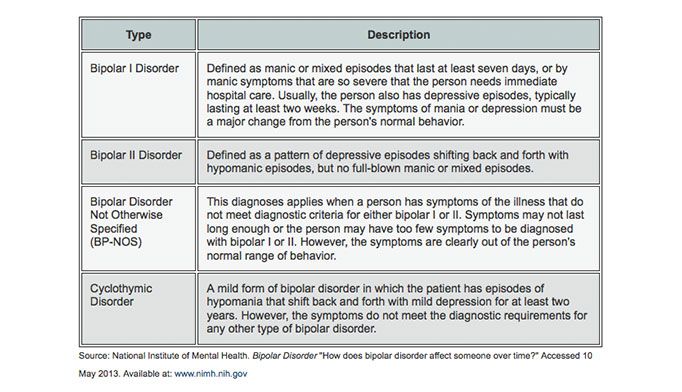
Treatment of major depressive disorder (MDD) in children and adolescents
Psychotherapy is important for both patients and their families, so everyone knows about the plan and goals of treatment. When the patient receives information, the severity of symptoms decreases. Mental education may include knowledge about the signs and symptoms of depression, the clinical course of the illness, the risk of exacerbation, treatment options, and parental advice on how to interact with depressed young people.
According to research by Sandra Mullen, psychotherapy, along with medication, is often recommended for the treatment of major depressive disorder (MDD) in children and adolescents diagnosed with depression, suicidal ideation, and transient hypomania/mania.
Treatment of bipolar depression
Bipolar depression remains a clinical problem. Treatment options are limited, especially in the treatment of the acute phase of bipolar depression.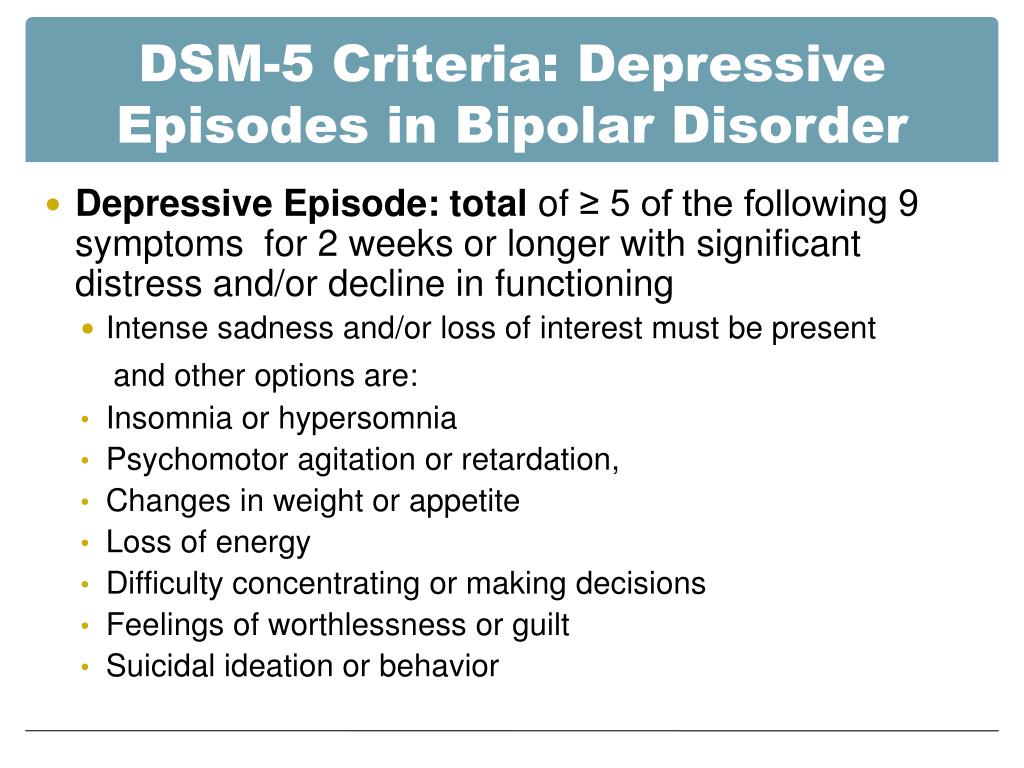 There are currently only three approved drugs: OFC, quetiapine (immediate or extended release) and lurasidone (lithium monotherapy or adjuvant therapy or valproate). All three agents have similar efficacy profiles. They differ in duration.
There are currently only three approved drugs: OFC, quetiapine (immediate or extended release) and lurasidone (lithium monotherapy or adjuvant therapy or valproate). All three agents have similar efficacy profiles. They differ in duration.
Non-approved agents and treatments
Non-pharmacological drugs such as lamotrigine, antidepressants, modafinil, pramipexole, ketamine, and electroconvulsive therapy (ECT) are often prescribed for the treatment of acute bipolar depression.
Treatment of recurrent depression:
Some patients may experience recurrent episodes of depression throughout their lives unless supportive care is used to prevent relapse. Treatment should include psychotherapy and pharmacotherapy, and the dose should generally not be reduced after remission has been achieved.
Differential
Critical to rule out depressive disorder due to another medical condition, depressive disorder due to psychoactive substances/drugs, dysthymia, cyclothymia, bereavement, adjustment disorder with depressed mood, bipolar disorder, schizoaffective disorder, schizophrenia, anxiety disorders and eating disorders when assessed for DMD.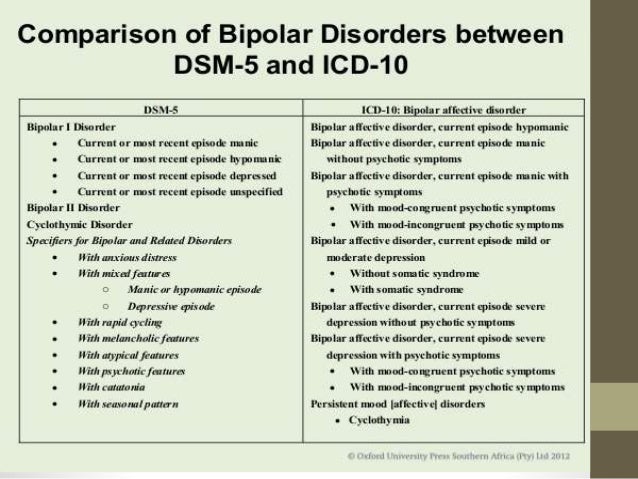 Depressive symptoms can develop as a result of the following factors:
Depressive symptoms can develop as a result of the following factors:
- Neurological causes such as cerebrovascular accident, multiple sclerosis, epilepsy, Parkinson's disease and Alzheimer's disease.
- Endocrine diseases such as diabetes, thyroid disease and adrenal disease.
- Metabolic disorders such as hypercalcemia, hyponatremia
- Drugs/substances causing dependence: steroids, antihypertensives, anticonvulsants, antibiotics, sedatives, sleeping pills, alcohol, stimulant withdrawal.
- Nutrient deficiencies such as vitamin D, B12, B6, iron or folate deficiency
- Infectious diseases such as HIV and syphilis
- Malignant neoplasms
Prognosis
Episodes of depression in untreated major depressive disorder can last 6 to 12 months. Approximately two-thirds of people with MDD think about suicide, and 10 to 15% commit suicide. MDD is a chronic relapsing disease; the recurrence rate after the first episode is about 50%, 70% after the second episode and 90% after the third episode.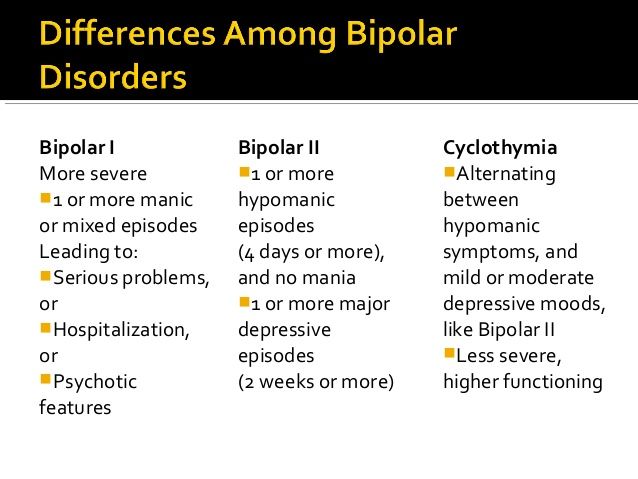 Approximately 5-10% of people with MDD develop bipolar disorder.
Approximately 5-10% of people with MDD develop bipolar disorder.
Patients with mild episodes, no psychotic symptoms, improved adherence, a reliable support system, and adequate premorbid functioning have a positive prognosis for MDD. In the presence of a concomitant mental disorder, personality disorder, multiple hospitalizations and advanced age, the prognosis is poor.
Complications
MDD is one of the leading causes of disability in the world. This not only causes severe functional impairment, but also negatively affects interpersonal relationships, reducing the quality of life. Individuals with MDD are at significant risk of developing comorbid anxiety and drug use disorders, which increase the risk of suicide.
Diabetes, hypertension, chronic obstructive pulmonary disease and coronary heart disease may be aggravated by depression. People who are depressed are more likely to engage in self-destructive behavior as a coping method. Left untreated, MDD can be quite debilitating.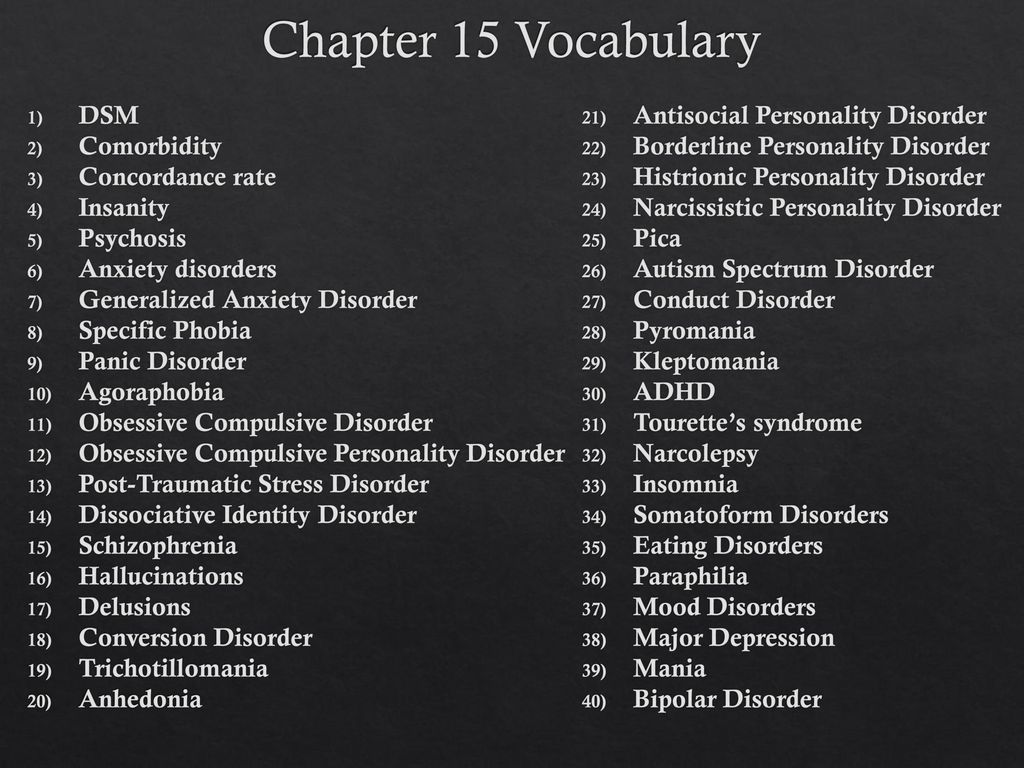
Findings
In 2008, WHO classified major depressive disorder (MDD) as the third leading cause of disease burden worldwide and is expected to be number one by 2030.
Diagnosis is made when a person has a persistently low or depressed mood, anhedonia (loss of interest in pleasure), feelings of guilt or worthlessness, lack of energy, poor concentration, changes in appetite, psychomotor retardation or agitation, trouble sleeping, or suicidal thoughts.
Effective and successful treatment of MDD requires a multidisciplinary approach. These collaborative services include primary care physicians and psychiatrists, as well as nurses, therapists, social workers and caregivers. Screening for depression in primary care settings is critical.
Depression - Articles for the population - Khislavichskaya district hospital
World Health Day is celebrated annually on April 7 in honor of the founding day of WHO.
2017 is dedicated to the fight against depression. Depression affects people of all ages, from all walks of life, in all countries. It causes mental anguish and affects people's ability to perform daily tasks. At its worst, depression can lead to suicide, the second leading cause of death for people aged 15–29years, according to the WHO. “Beginning October 10, 2016, the overall goal of World Mental Health Day is that all people suffering from depression in all countries can seek and receive help. More specifically, we want to educate the general public about depression, its causes and possible consequences, including suicide, and the types of help available to prevent and treat depression. We want people with depression not to be afraid to seek help, so that their family members, friends and colleagues can support them,” the WHO website says.
Depression affects people of all ages, from all walks of life, in all countries. It causes mental anguish and affects people's ability to perform daily tasks. At its worst, depression can lead to suicide, the second leading cause of death for people aged 15–29years, according to the WHO. “Beginning October 10, 2016, the overall goal of World Mental Health Day is that all people suffering from depression in all countries can seek and receive help. More specifically, we want to educate the general public about depression, its causes and possible consequences, including suicide, and the types of help available to prevent and treat depression. We want people with depression not to be afraid to seek help, so that their family members, friends and colleagues can support them,” the WHO website says.
WHO has decided to focus on three groups that are at particular risk: adolescents and young adults, women of childbearing age (especially after childbirth) and the elderly (over 60 years of age).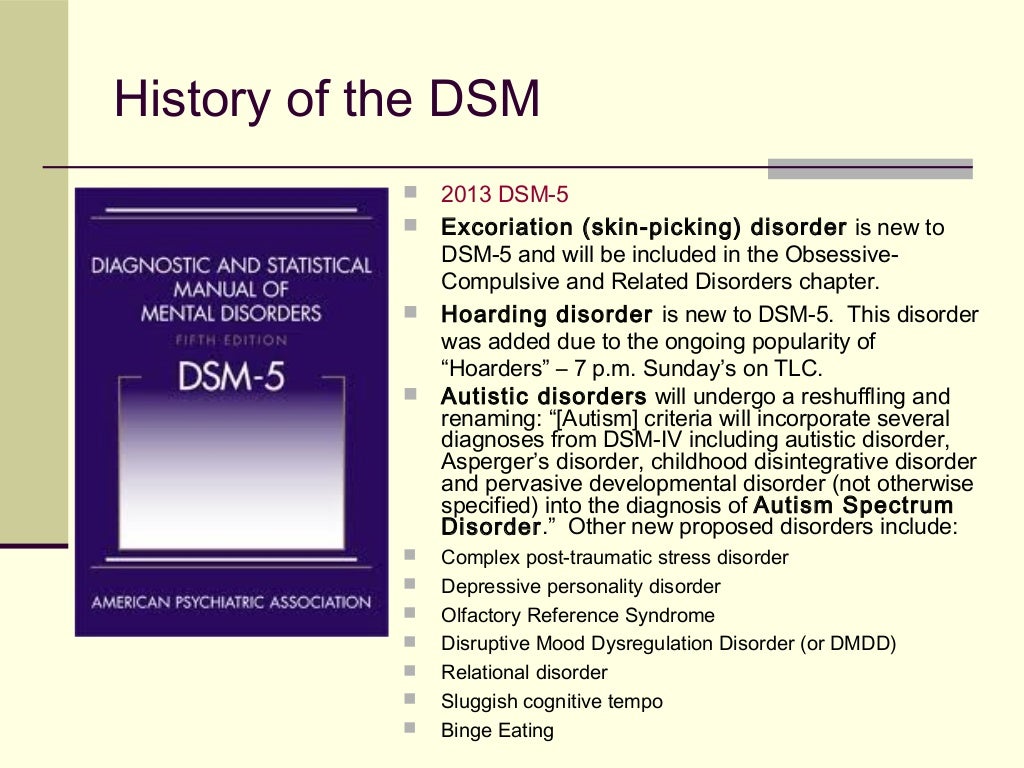
According to a World Health Organization (WHO) report, depression and anxiety disorders cost the world $1 trillion annually. At the same time, every dollar invested in the fight against these diseases will bring to any economy $ 4 due to improved health and working capacity of the population, according to a WHO study.
Depression is an illness characterized by a persistent state of despondency and loss of interest in activities that would normally bring satisfaction, as well as an inability to do daily activities for at least two weeks. In addition, people with depression usually have some of the following symptoms: lack of energy, decreased appetite, drowsiness or insomnia, anxiety, decreased concentration, indecision, restlessness, feelings of worthlessness, guilt or despair, and thoughts of hurting themselves or suicide.
Depression (from Latin deprimo - “pressure”, “suppress”) - a mental disorder characterized by a “depressive triad”: a decrease in mood and a loss of the ability to experience joy (anhedonia), impaired thinking (negative judgments, a pessimistic view of what is happening, and so on ), motor retardation. With depression, self-esteem is reduced, there is a loss of interest in life and habitual activities. In some cases, a person suffering from it may begin to abuse alcohol or other psychotropic substances.
With depression, self-esteem is reduced, there is a loss of interest in life and habitual activities. In some cases, a person suffering from it may begin to abuse alcohol or other psychotropic substances.
It is a type of affective disorders (mood disorders). Depression is treatable, but depression is currently the most common mental disorder. It affects one in ten over the age of 40, two-thirds of them are women. Depression is three times more common among people over 65 years of age. Also, about 5% of children and adolescents aged 10-16 years are affected by depression and depressive states. According to the World Health Organization, depression is the leading cause of adolescent illness and disability. The overall prevalence of depression (of all varieties) in adolescence ranges from 15 to 40%. Many studies emphasize that the greater prevalence of affective disorders at this age corresponds to a higher frequency of suicides.
Many people believe that depression is a disease that has spread and acquired such great social significance only in our time and was not known before.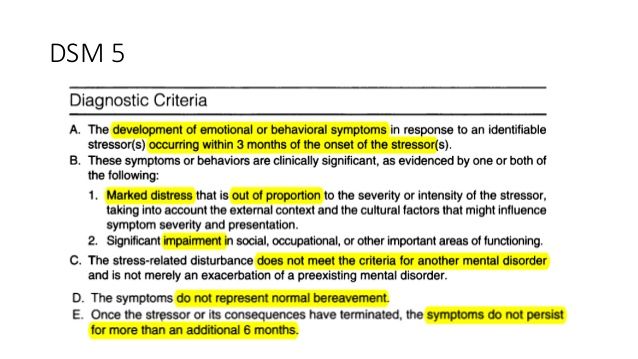 But this is not so: depression has been known to doctors since antiquity. Even the famous ancient Greek physician Hippocrates described in detail under the name "melancholy" conditions that are very reminiscent of our current definition of depression, and even recommended treatment within the capabilities of ancient medicine.
But this is not so: depression has been known to doctors since antiquity. Even the famous ancient Greek physician Hippocrates described in detail under the name "melancholy" conditions that are very reminiscent of our current definition of depression, and even recommended treatment within the capabilities of ancient medicine.
Treatment of depression according to Hippocrates consisted of prescribing tincture of opium, warm cleansing enemas (Hippocrates drew attention to the fact that severe depressions are often accompanied by constipation, and attached great importance to this), psychological support (it was recommended to “encourage and amuse” the patient), prolonged warm baths, massages and drinking mineral water from one of the well-known sources in Crete (as it turned out later, this water contained a large amount of bromine, magnesium and lithium ions - that is, it really could help with depression)
Hippocrates also drew attention to the dependence of the condition of many depressive patients on the weather and season, to the seasonal frequency of depression in many patients, to the improvement in the condition of some patients after a sleepless night.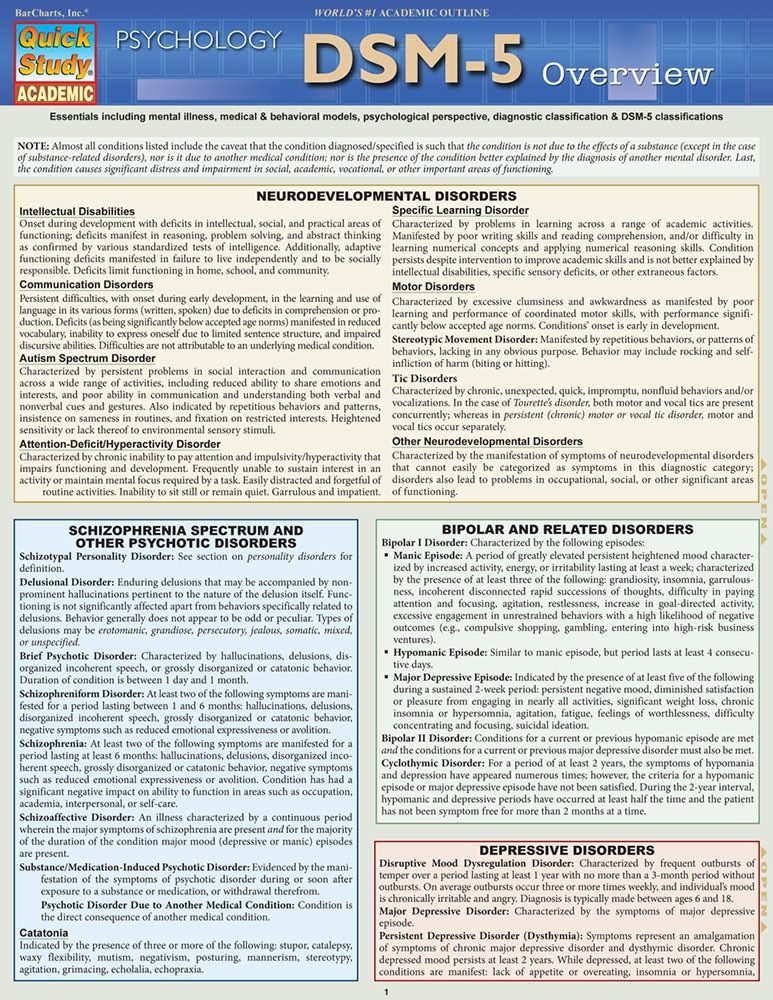 Thus, he was close to discovering the therapeutic effect of sleep deprivation and sunlight (phototherapy), although he did not make this discovery.
Thus, he was close to discovering the therapeutic effect of sleep deprivation and sunlight (phototherapy), although he did not make this discovery.
The Ebers Papyrus, one of the most important medical treatises of ancient Egypt, also contains a short description of depression. Although the information on the papyrus is full of ritual rites and intricate recipes for expelling disease-causing demons and other evil spirits, it also testifies to long empirical practice and observation.
Causes of depression
Depression can be the result of dramatic experiences, such as loss of a loved one, job, social status. In such cases, we are talking about reactive depression. It develops as a reaction to some external event, situation. According to some theories, depression sometimes occurs when the brain is overworked as a result of stress, which can be based on both physiological and psychosocial factors.
A risk factor for the development of depression in adults can also be severe experiences in childhood: for example, child abuse may be a prerequisite for their future depression.
But if the psychological, iatrogenic or somatic causes of depression are absent or not obvious, such depression is called endogenous, that is, as it were, “occurring from within” (of the body, psyche). Approximately in one third (about 35%) of cases, overt depression occurs autochthonously, that is, without any external influences. Structurally, such depressions are endogenous from the very beginning.
The monoamine theory associates the development of depression with a deficiency of biogenic amines, namely serotonin, norepinephrine and dopamine. Some researchers conclude that this theory is not broad enough, as it does not explain the limitations in the effectiveness of antidepressants and the slow development of their therapeutic effect.
Many people in sunless weather or in those who are in darkened rooms, depression can occur due to the lack of bright light. This variety is called seasonal depression or seasonal affective disorder, because it is most often observed in patients in autumn and winter. Treat seasonal depression with sunny walks or light therapy. However, in a study conducted on a large sample (34,294 people), it was not possible to find relationships between depression and the season. Depression was not related to the latitude at which a person lives, nor to the amount of sunlight[13]. But this study has important shortcomings - in particular, the survey of these 34 294 people were conducted by phone, which does not make it possible to diagnose the presence or absence of clinical depression in respondents.
Treat seasonal depression with sunny walks or light therapy. However, in a study conducted on a large sample (34,294 people), it was not possible to find relationships between depression and the season. Depression was not related to the latitude at which a person lives, nor to the amount of sunlight[13]. But this study has important shortcomings - in particular, the survey of these 34 294 people were conducted by phone, which does not make it possible to diagnose the presence or absence of clinical depression in respondents.
Depression can result from the side effects of many drugs (eg, levodopa, corticosteroids, benzodiazepines)—so-called iatrogenic or pharmacogenic depression.
Most often, this depression resolves quickly on its own or is cured when the drug is discontinued.
Antipsychotic depression
(due to the use of neuroleptics) can last from several months to 1.5 years and often have a vital character.
The cause of depression in some cases is the abuse of sedatives or hypnotics, alcohol, cocaine and other opiate psychostimulants.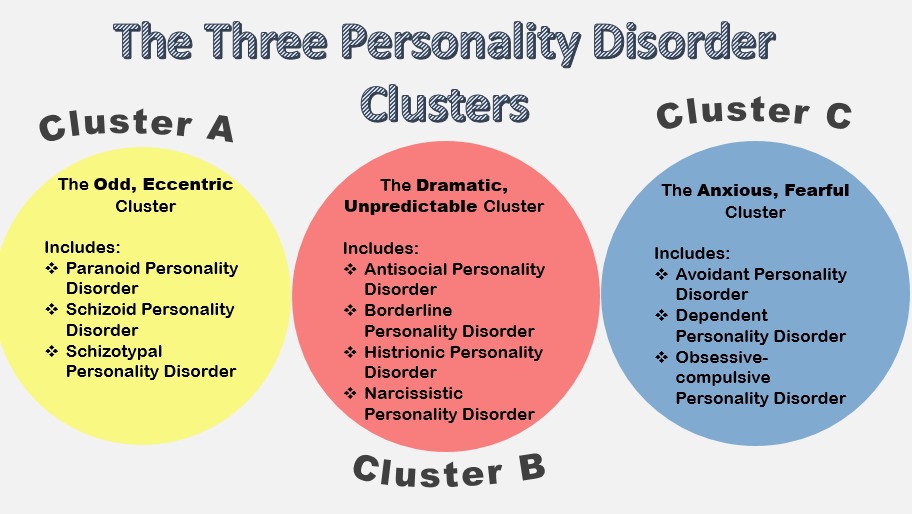
Depressions can also be somatic or, more precisely, somatogenic,
manifest as a consequence of somatic diseases (for example, Alzheimer's disease, atherosclerosis of the arteries of the brain, traumatic brain injury, or even ordinary influenza).
The main types of depression
There are unipolar depressions, in which the mood remains within one, reduced, "pole", and bipolar depressions, which are an integral part of bipolar affective disorder, which are interspersed with manic, hypomanic or mixed affective episodes. Also, depressive episodes of mild severity can occur with cyclothymia. The following forms of unipolar depressions can be distinguished (according to DSM-IV):
• Major depressive disorder, often referred to as clinical depression.
• A form of major depression is resistant depression, in which two consecutive courses (3-4 weeks each) of antidepressant treatment show no or insufficient clinical effect.
• Minor depression that does not meet all criteria for clinical depression, but in which at least two of the main diagnostic symptoms have been present for at least two weeks[41].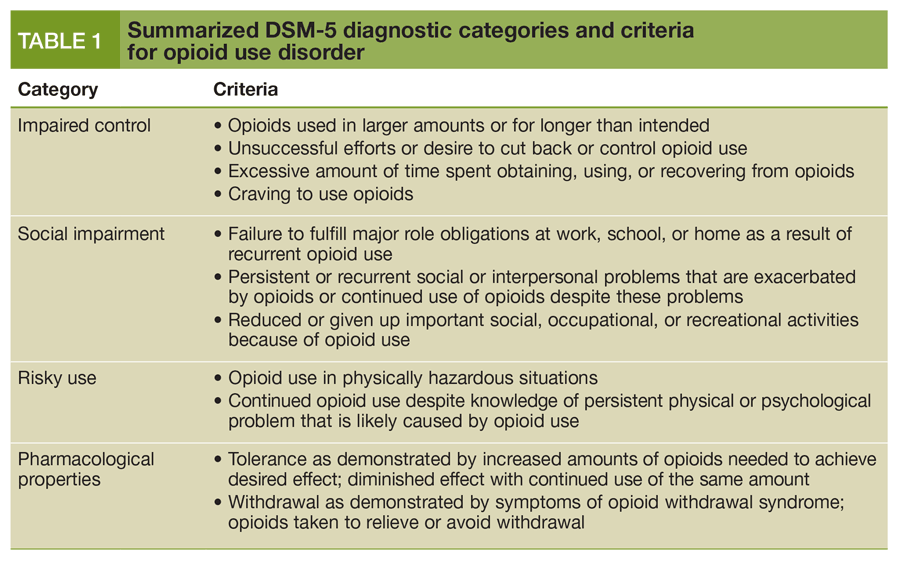
• Atypical depression is a form of depressive disorder in which, along with the typical symptoms of depression, there are specific signs such as increased appetite, weight gain, increased sleepiness and so-called "emotional reactivity".
• Postnatal depression is a form of depressive disorder that develops immediately after childbirth.
• Recurrent brief depression (RBD), differs from major depressive disorder primarily because of the difference in duration. People with RBD experience depressive episodes about once a month, with individual episodes lasting less than two weeks and usually less than 2–3 days. For RBD to be diagnosed, episodes must have been present for at least one year and, if the patient is female, regardless of the menstrual cycle. People with clinical depression can develop RBD, as well as vice versa].
• Dysthymia is a mild chronic mood disorder in which a person complains of almost daily bad mood for at least two years. Symptoms are not as severe as in clinical depression, although people with dysthymia are also subject to periodic episodes of clinical depression (sometimes called "double depression")].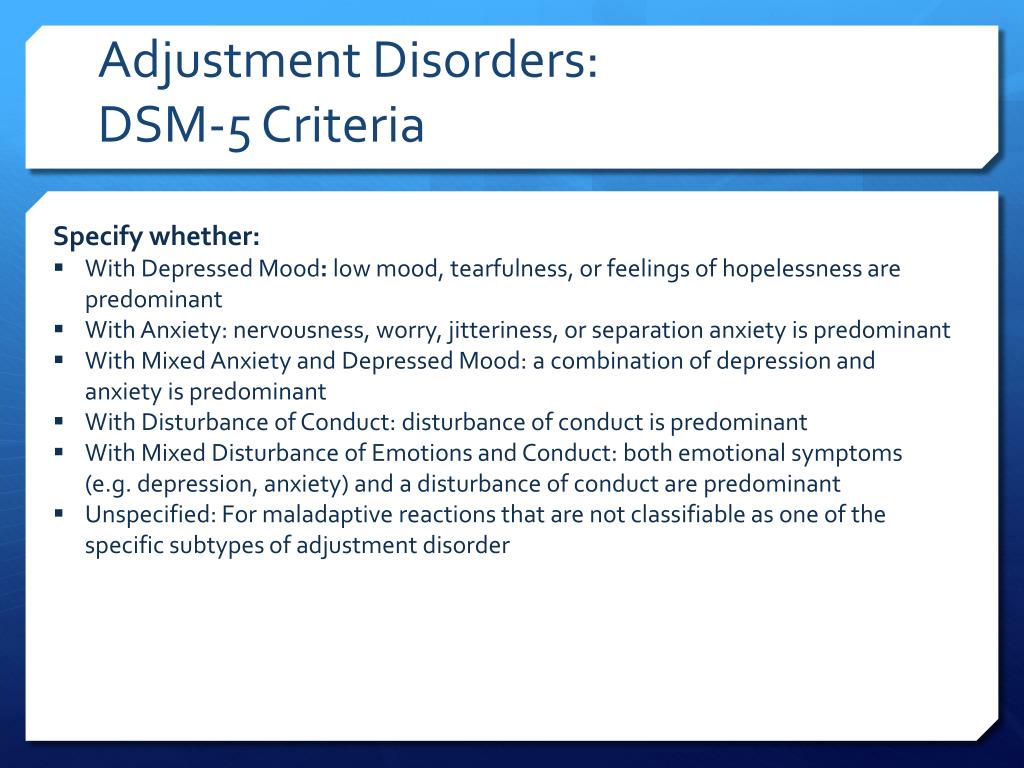
Other depressive disorders (DD-NOS) under the DSM code 311 include depressive disorders that cause detriment but do not qualify under officially defined diagnoses, that is, "do not meet the criteria for any specified disorder."
In Russian-speaking medicine, the expression vital depression is often used. It means, first of all, the “vital” (“vital”) character of depression, with pronounced melancholy and anxiety, which patients feel on the physical level[45], for example, melancholy can be felt in the form of pain in the solar plexus. It was believed that "vital" depression is caused by a violation of "life processes", develops cyclically, being inaccessible to external influences, and arises for no reason, inexplicable for the patient himself]. This character is often characteristic, in particular, of "bipolar" depression in MDP and endogenous depression in general.
In a narrower sense, vital is primarily called "dreary depression", in which the manifestations of longing and despair are most pronounced, as well as depression with disorders in the "vital sphere" - with disturbances in the need for food, sleep, etc. ] Vital depressions are classified as a major depressive episode without psychotic symptoms.
] Vital depressions are classified as a major depressive episode without psychotic symptoms.
Despite the severity of the condition, such depressions are prognostically favorable, as they respond well to treatment with antidepressants.
In addition, "vital depressions" are sometimes called depressive states in cyclothymia (according to the classification of Schneider, 1959), with blurred manifestations of melancholy, pessimism, despondency, depression, and with a strong dependence of symptoms on the circadian rhythm [50][48]. This terminology is not widely used.
The course of the disease
At first, mild signals are felt in the form of sleep problems, irritability, refusal to perform normal duties. If these symptoms increase within two weeks, then this usually indicates the onset of the disease or its relapse, although it will fully manifest itself after two months] or even later. There are occasional seizures. Left untreated, depression can lead to suicide attempts, alienation from others, failure to perform most life functions, and family breakdown.
Depression can be caused and accompanied by other mental disorders, in particular neurosis.
It has been established that depression is associated with a decrease in the length of telomeres, which is also associated with the aging process.
Also, according to a recent study by scientists, it turned out that depression affects wound healing. In patients with depression, wounds heal more difficult, they are more likely to be rehospitalized. Moreover, the more severe the form of the disorder, the worse the result. Leading researcher Philip Britteon, believes that before the operation, special attention should be paid to the psychological state of the patient, so that the patient recovers as soon as possible.
The average duration of the disease is from 6 to 8 months, but in some patients depression acquires a chronic course. Chronic depression is a depression that lasts more than two years.
Resistant depression is considered to be such a depression in which, during two consecutive courses of adequate and long-term monotherapy with pharmacologically different drugs, there is an absence or insufficiency of a clinical effect (reduction of symptoms according to the Hamilton scale or Montgomery scale - less than 50%).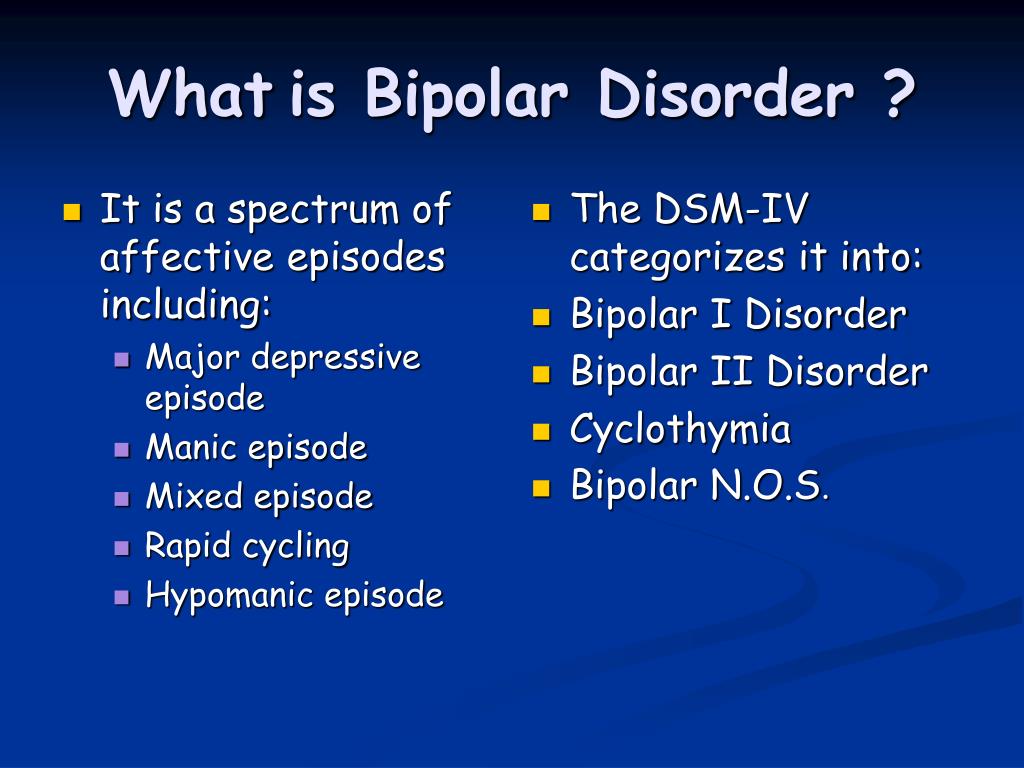
Not every patient requires hospitalization, treatment is often carried out on an outpatient basis. The main areas of depression therapy are pharmacotherapy, psychotherapy and social therapy. The most important criterion for successful antidepressant therapy is the correct clinical diagnosis: the approach to treating depression should depend on its cause. So, with somatogenic depression, it is necessary first of all to treat a somatic disease and only in the second place - symptomatic psychopharmacotherapy and psychotherapy. With endogenous depression, psychopharmacotherapy is the main method, and psychotherapy is used in addition to it; in psychogenic (neurotic and reactive) depression, psychotherapy is no less important than psychopharmacotherapy.
It should be noted that even in cases where somatic pathology is not the cause of a depressive disorder, the presence of certain somatic diseases (for example, subclinical hypothyroidism, Cushing's disease, polycystic ovary syndrome, coronary heart disease, oncological pathology, chronic infections, vitamin or elemental deficiency etc.